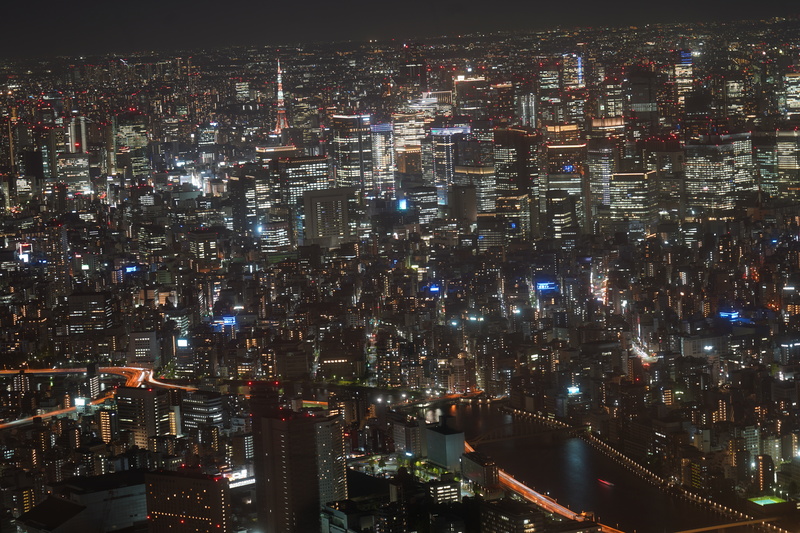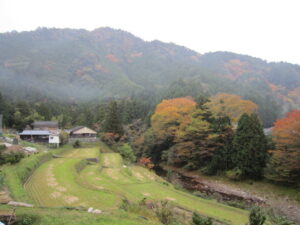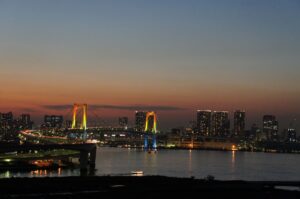Great East Japan Earthquake and tsunami
In 2011, March 11th 14:46, a magnitude 9.0 earthquake occurred in east Japan, it is called the Great East Japan Earthquake. 50 minutes later, the tsunami started hitting coastal areas. Fukushima prefecture is in east Japan ( highlighted in red in the map ), 4,147 people were killed by the tsunami. But this was not the only tragedy for people in Fukushima. 15 metre tsunami which was an expected height went over breakwaters and hit Uni 1 – 4 in Fukushima Daiichi Nuclear Power Plant ( it is called ‘1F’ ). It caused a hydrogen explosion on Unit 1 on March 12th. On March 14th and 15th, hydrogen explosions happened to Unit 3 and 4, too. Due to radioactive pollution, residents lived in 20km from 1F were forced to evacuate to safer areas. 13 years after, decontamination work has still been in progress, there are still no entry zones in the 7 towns. Even in places the evacuation order has been lifted, not so many residents have come back. We had a valuable experience by joining a tour. We visited the area stuck, off-limits areas including the nuclear power plant. More details about the tour are described in the bottom of this page.
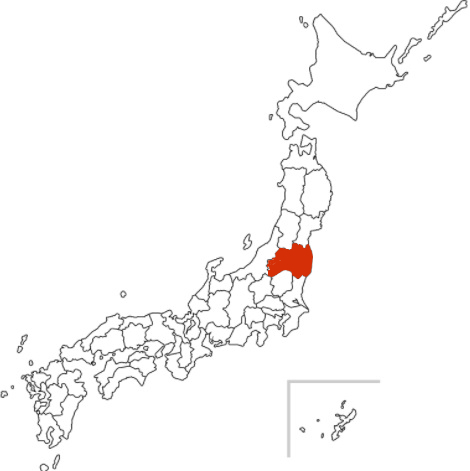
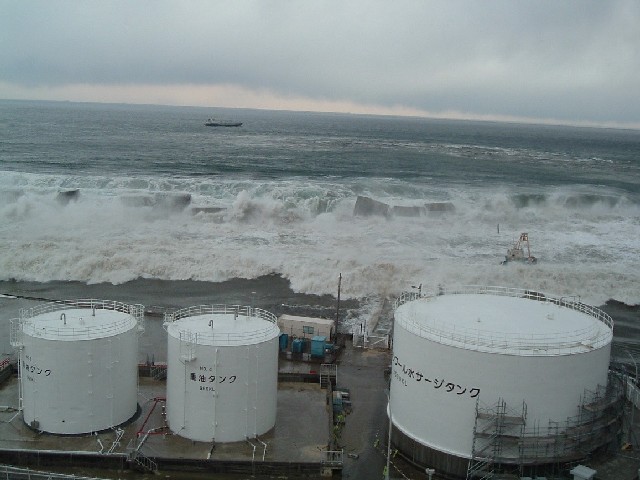
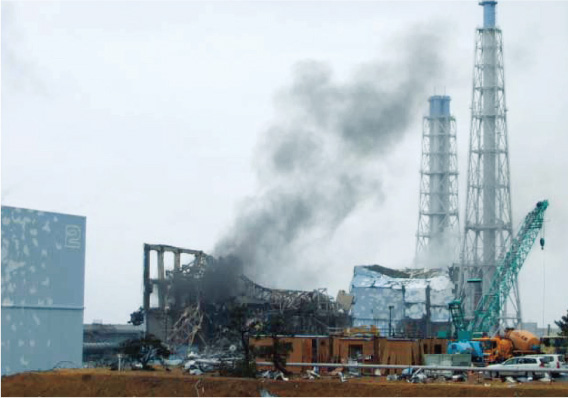
Ukedo Primary School
The tsunami hit Ukedo Primary School was inundated by the tsunami and 1st floor was damaged a lot, but teachers and students in the school building were safely evacuated to higher ground before the tsunami reached them, thus avoiding any casualties. Impressively a boy student who knew a shortcut to higher ground navigated teachers and students there because teachers trusted him. Now the school building is open for public as earthquake-devastated remains. Open 9:00 – 16:30 ( 16:00 last entry time ), Close Tuesdays and New Year holidays ( open if Monday is a holiday, closed the next day ) , the fee is 300 yen for adult, 200 yen for high school student, 100 yen for junior high school student, other is free.
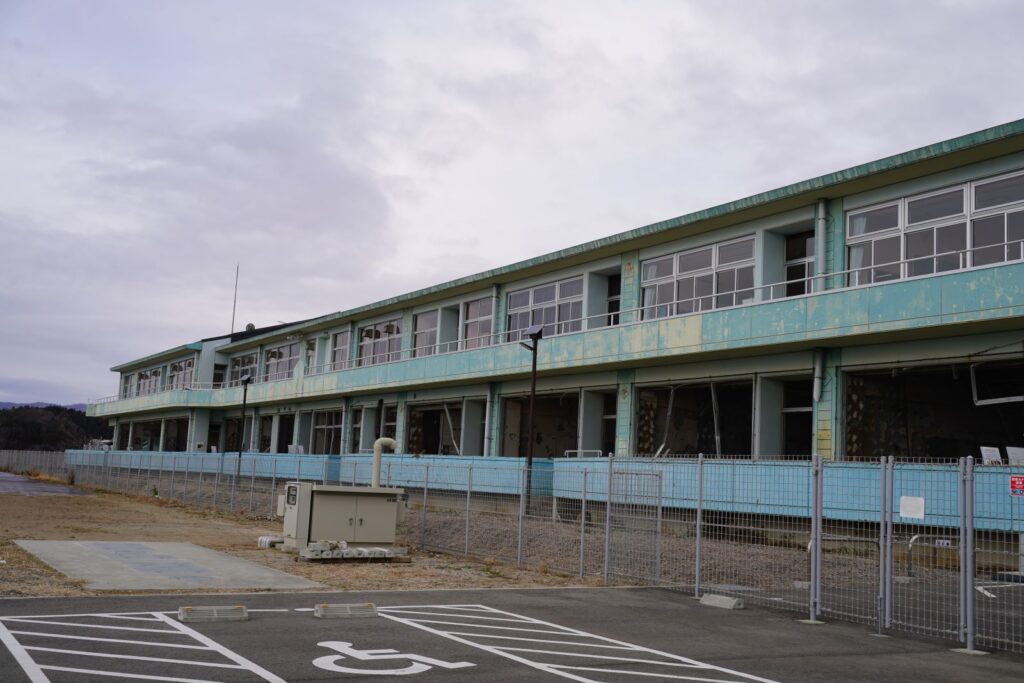
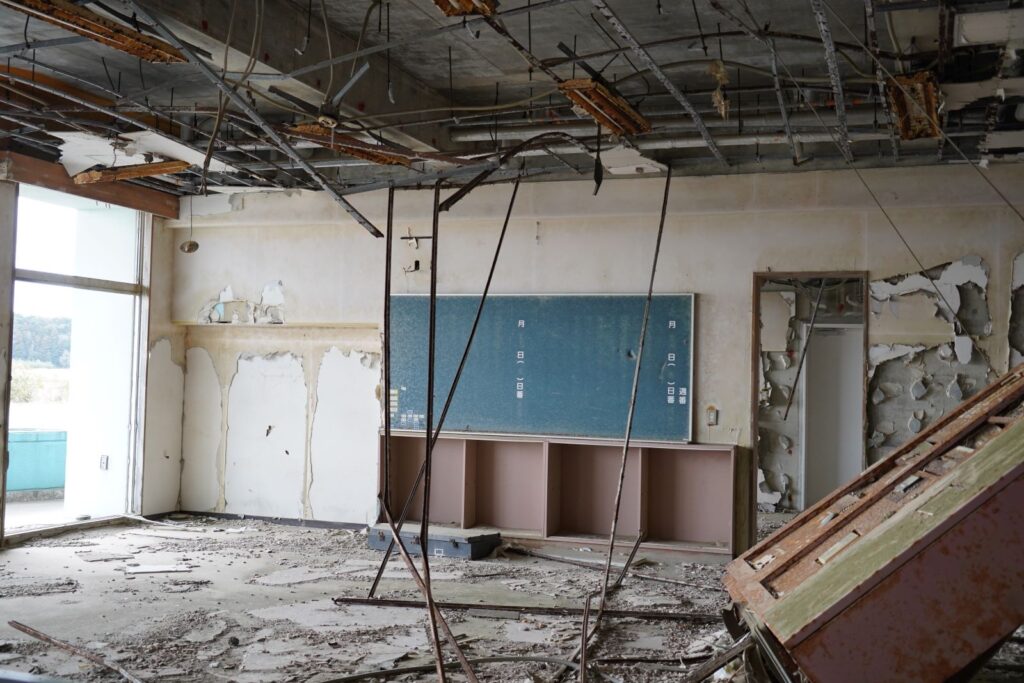
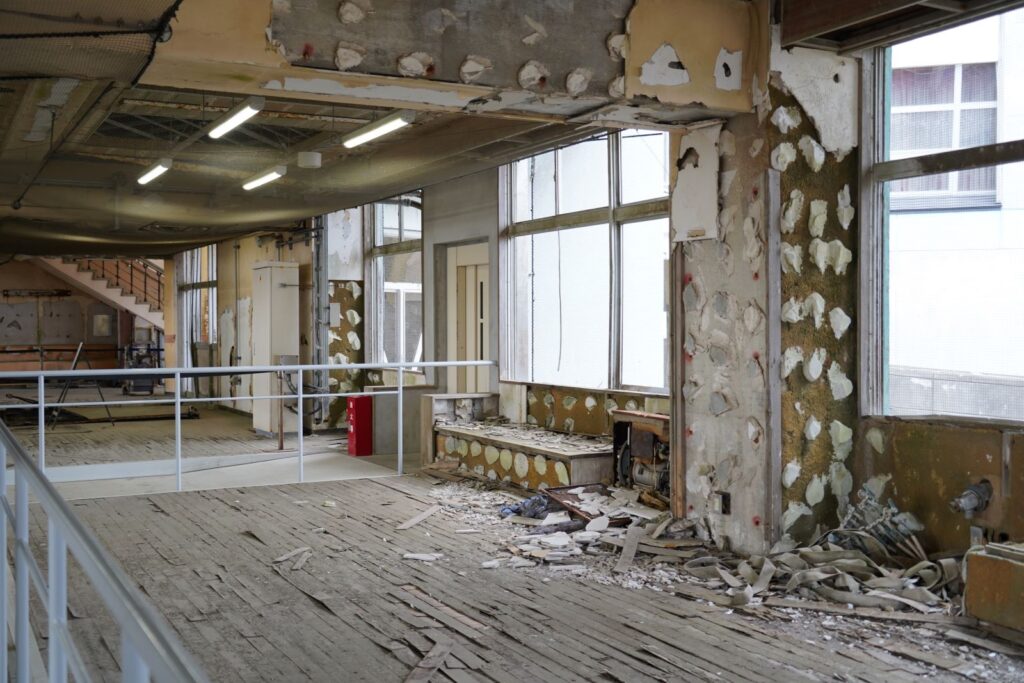
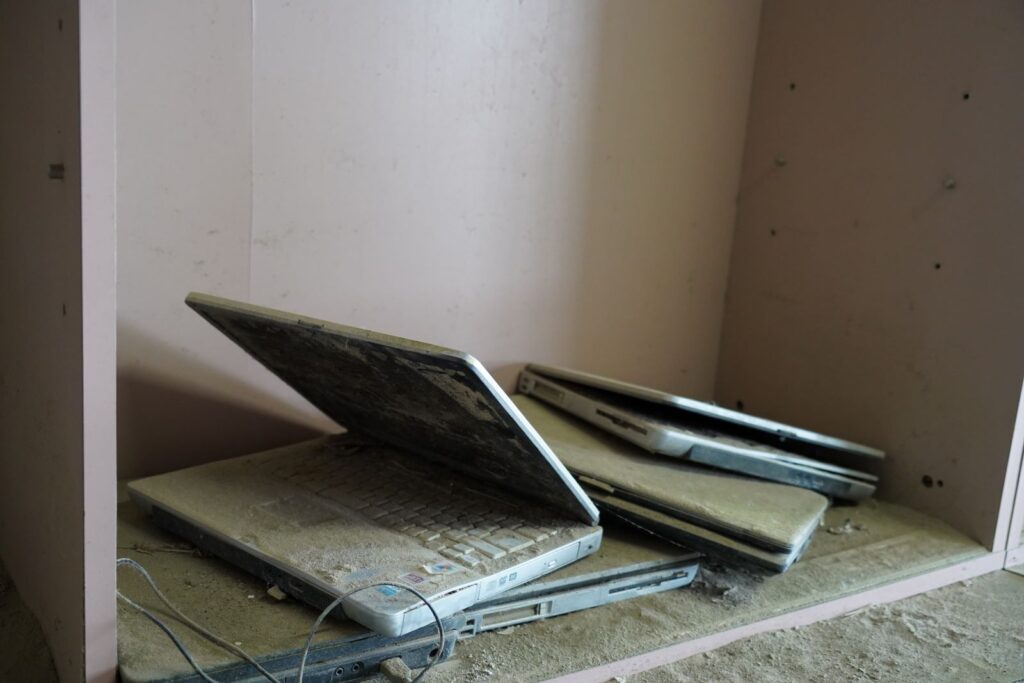
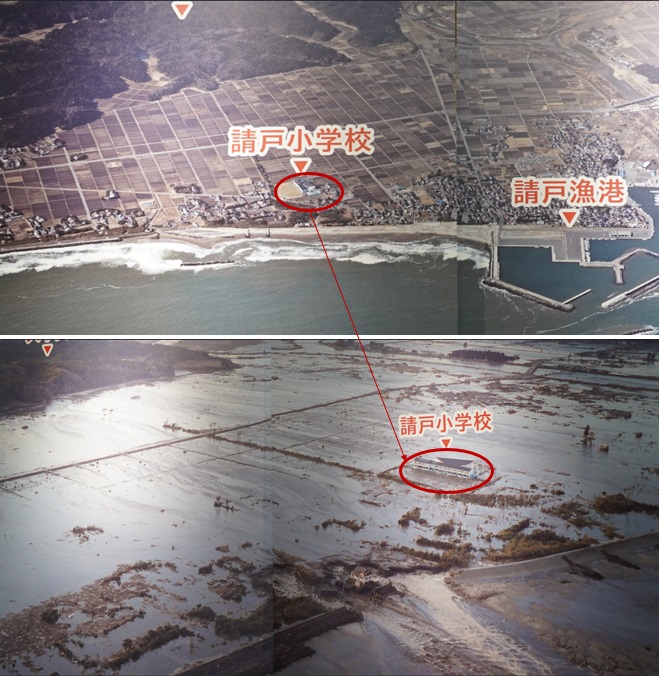
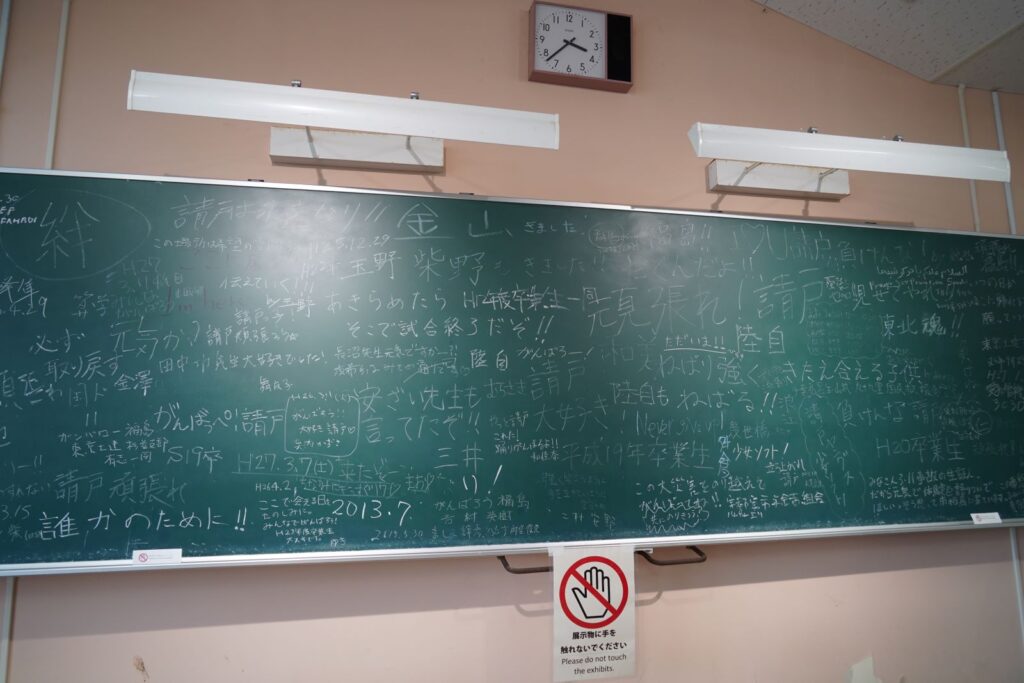
Exclusion zone
As of 2025, 7 municipalities ( Iidate-village, Minami Soma city, Kuzuo-village, Namie-town, Futaba-town, Okuma-town and Tomioka-town ) still have exclusion zones due to radiation. Those zones are not permitted to enter without screening and a permission. We were allowed to enter with a resident who lost his family by the tsunami and now is a storyteller.
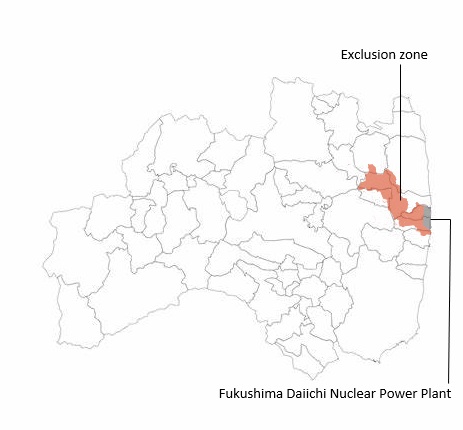
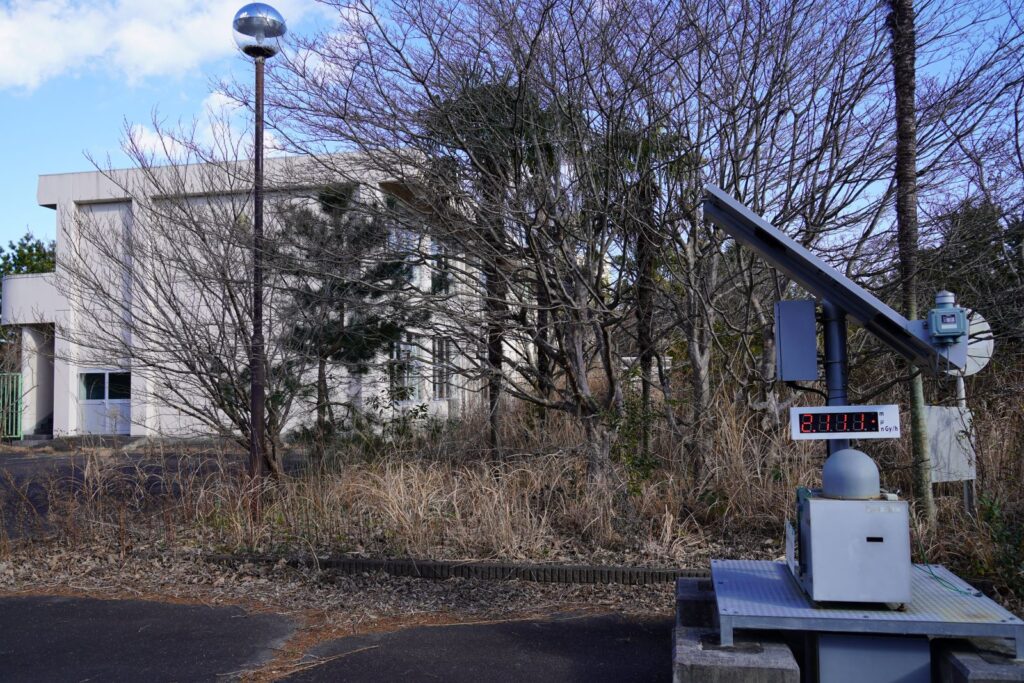
Firstly, we visited Kuma-machi Primary School. A radiation measurement in the right display 2.111 mSv/h. The tsunami didn’t reach the school. But all students and teachers in the school took action to evacuate.
Sv/h : sievert per hour
mSv/h : millisievert per hour that a person to be exposed by radiation. 1/1000Sv
μSv/h : microsievert per hour. 1/1000 mSv/h
General people should not exceed 1 mSv in a year.
People who work with radiation as a profession shouldn’t exceed 50 mSv in a year, 100 mSv in 5 years
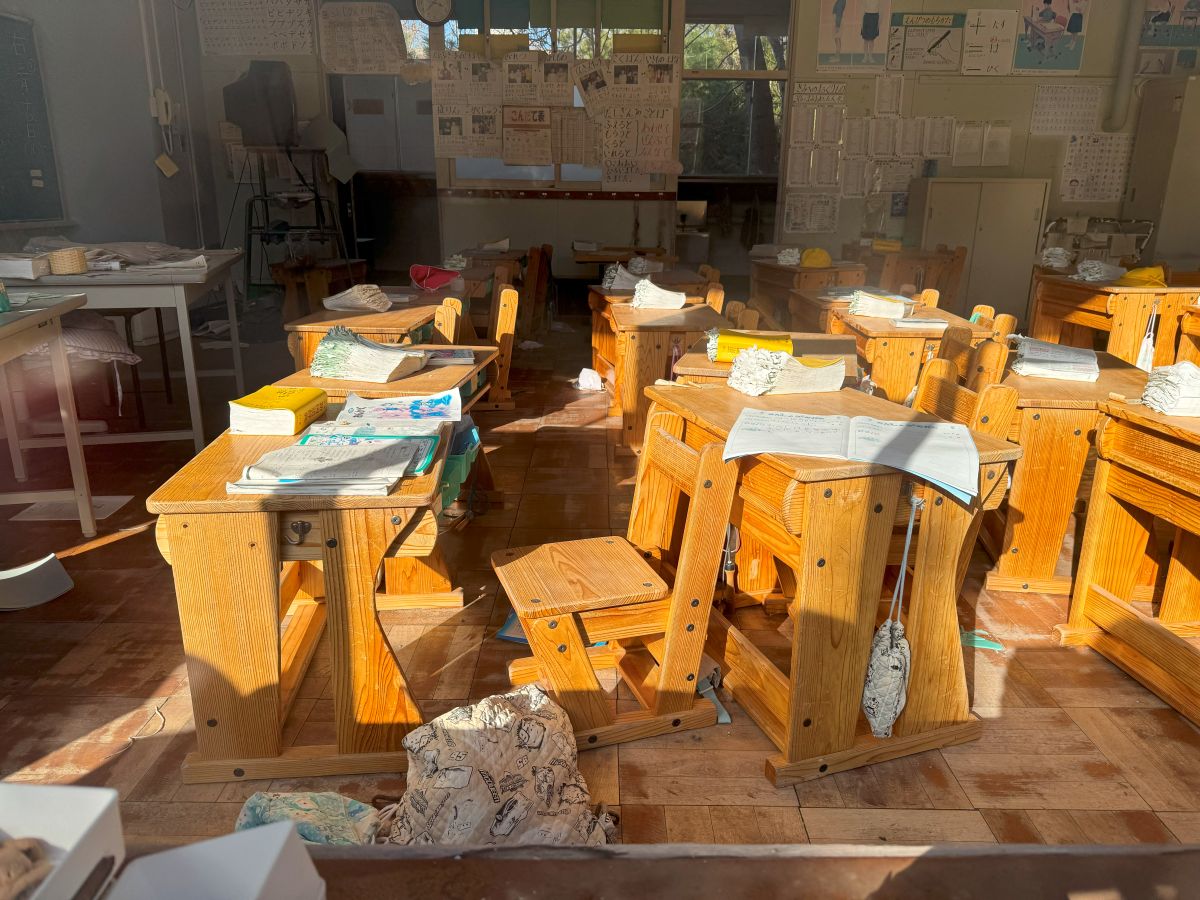
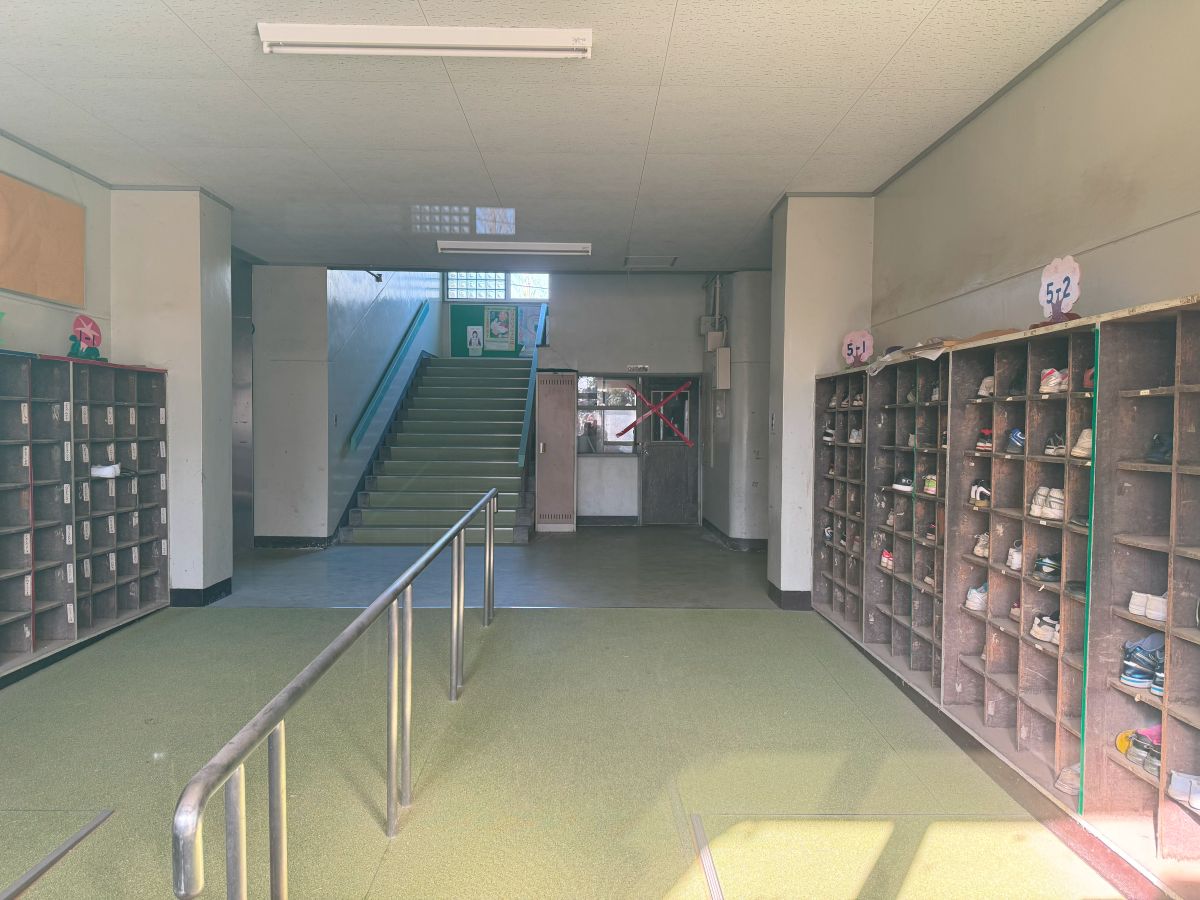
Dictionaries, notebooks remain on desks, shoes remain in shoes rockers since 2011 March 11. It shows students left the school with indoor shoes.
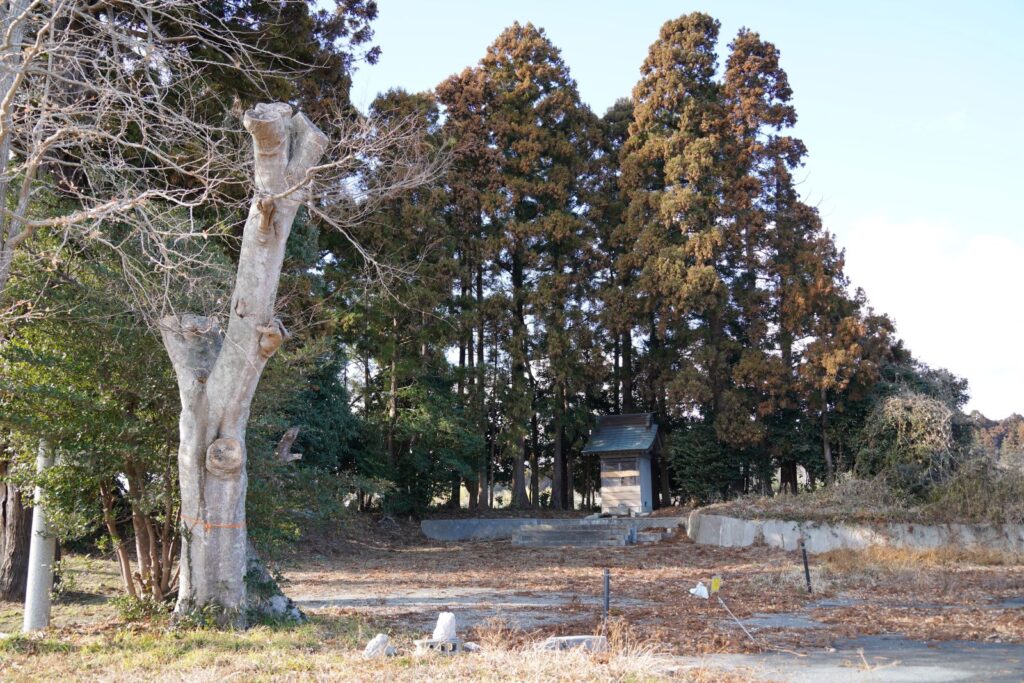
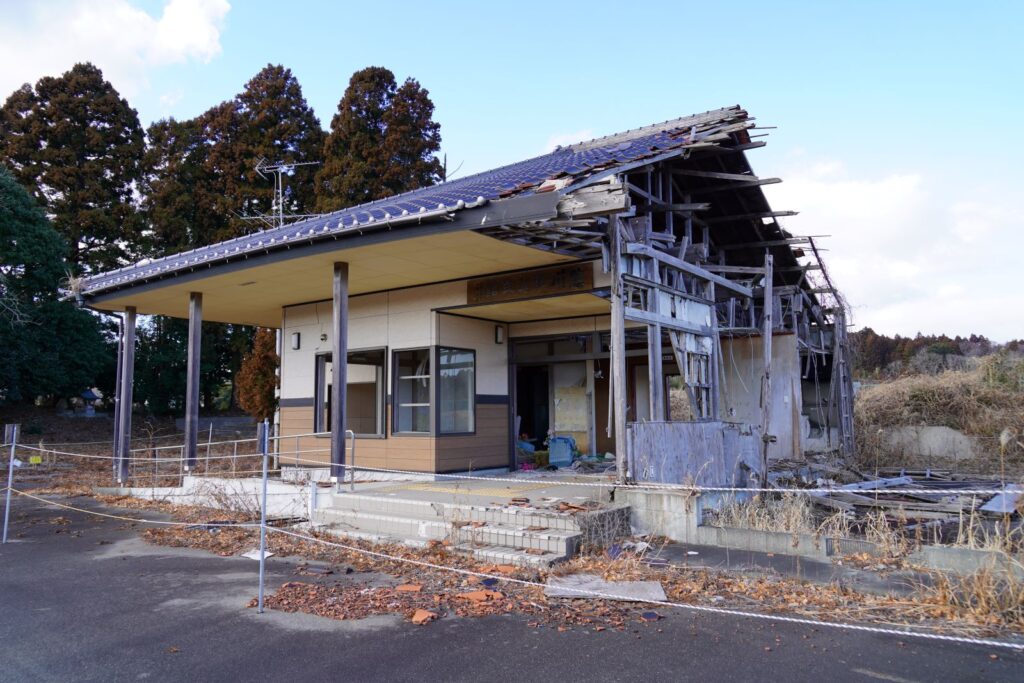
There were a Shinto shrine archway, a small shrine next to the public hall. The small shrine wasn’t swept away by the tsunami. The side of the public hall faces to the sea was destroyed by the tsunami. People in the public hall were swept away but they were able to survive because of the trees in the shrine stopped them and they could hold the trees.
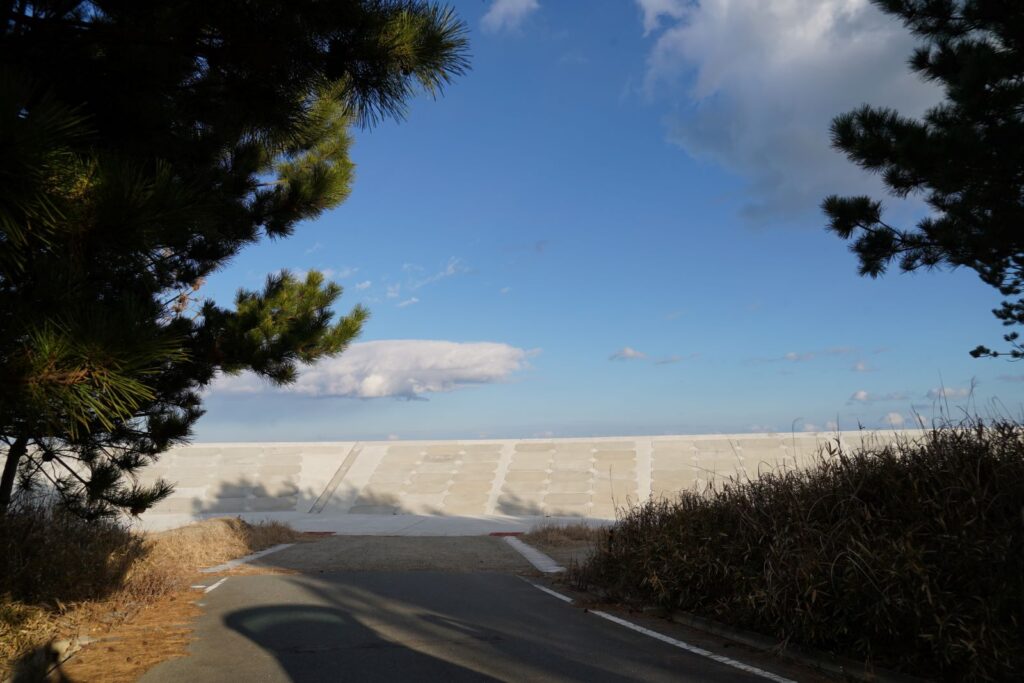
Newly constructed embankments but nobody will be allowed to live in this area permanently.
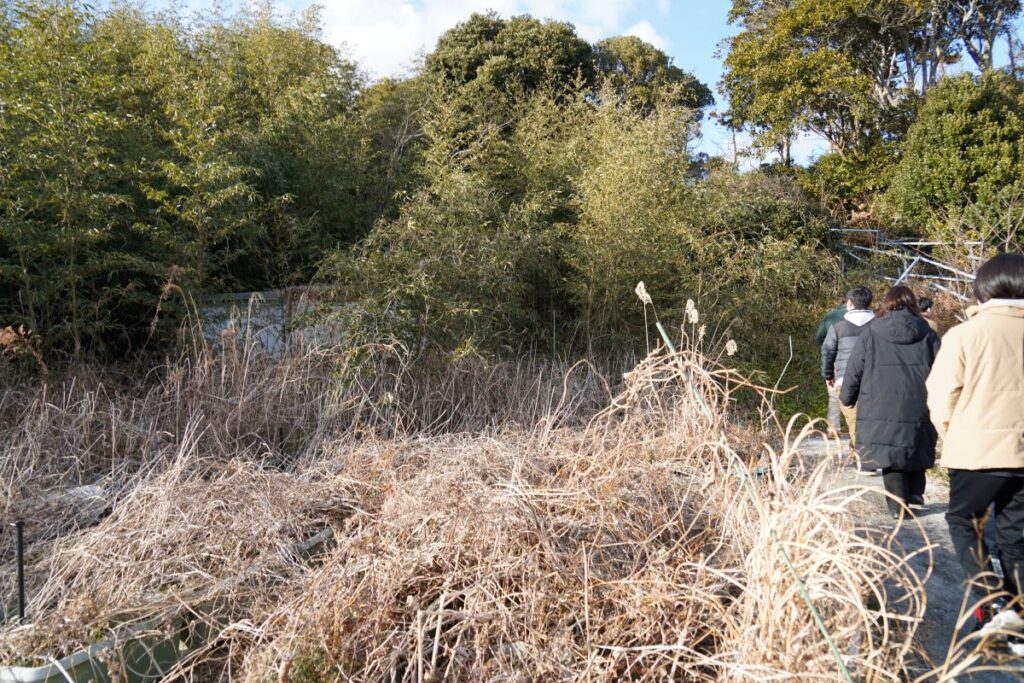
Storyteller’s house was there. The most of his young daughter’s bones haven’t been found yet. His handmade Buddhist altar for his father and daughter is on the top of the hill.
Fukushima Daiichi Nuclear Power Plant ( 1F )
Fukushima Daiich Nuclear Power Plant is called 1F. ( Fukushima Daini Neclear Power Plant is called 2F ). It is unusual to give a name of prefecture to a nuclear power plant instead of a town name, the name ‘Fukushima’ resulted financial damage for Fukushima prefecture caused by harmful rumours or misinformation for a long time after the tsunami and the hydrogen explosions in 1F.
Entry in 1F is restricted by TEPCO and the Japanese government. The tour we joined gave us a chance to visit there, we were navigated by a bureaucrat in Ministry of Economy, Trade and Industry but cameras, smart phones and smart watches are prohibited to bring due to the security policy. Only he can take photos and share them with us after a security check.
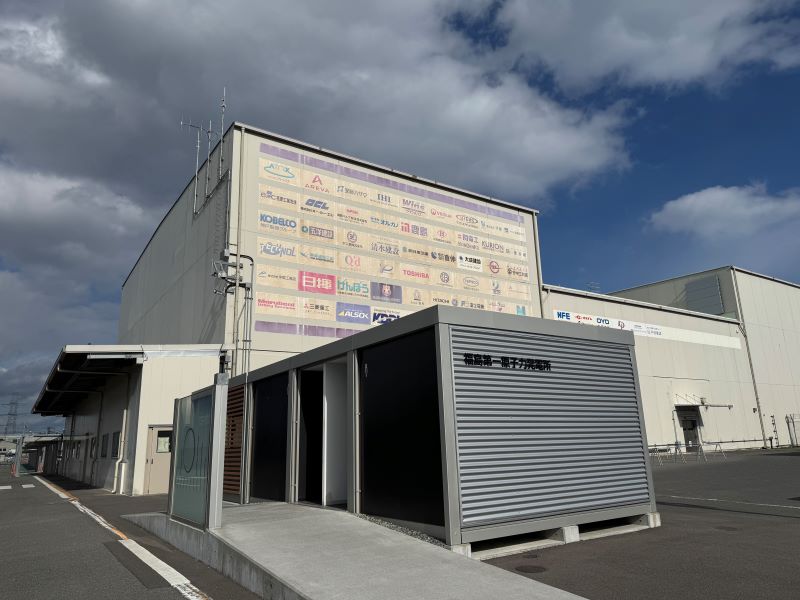
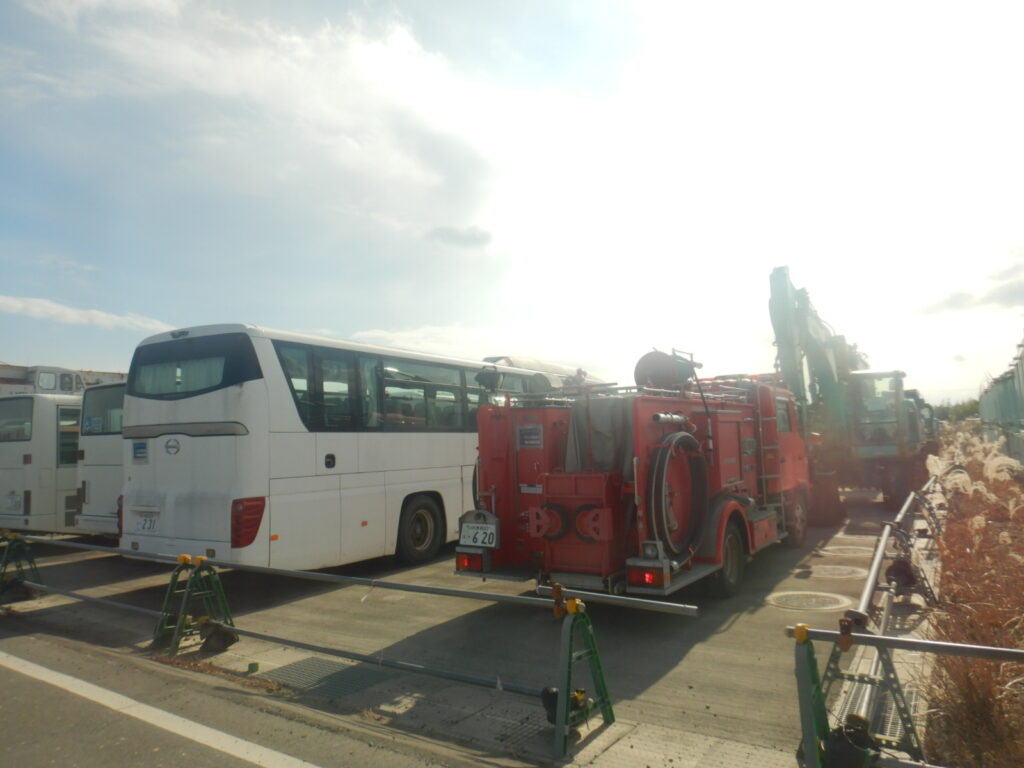
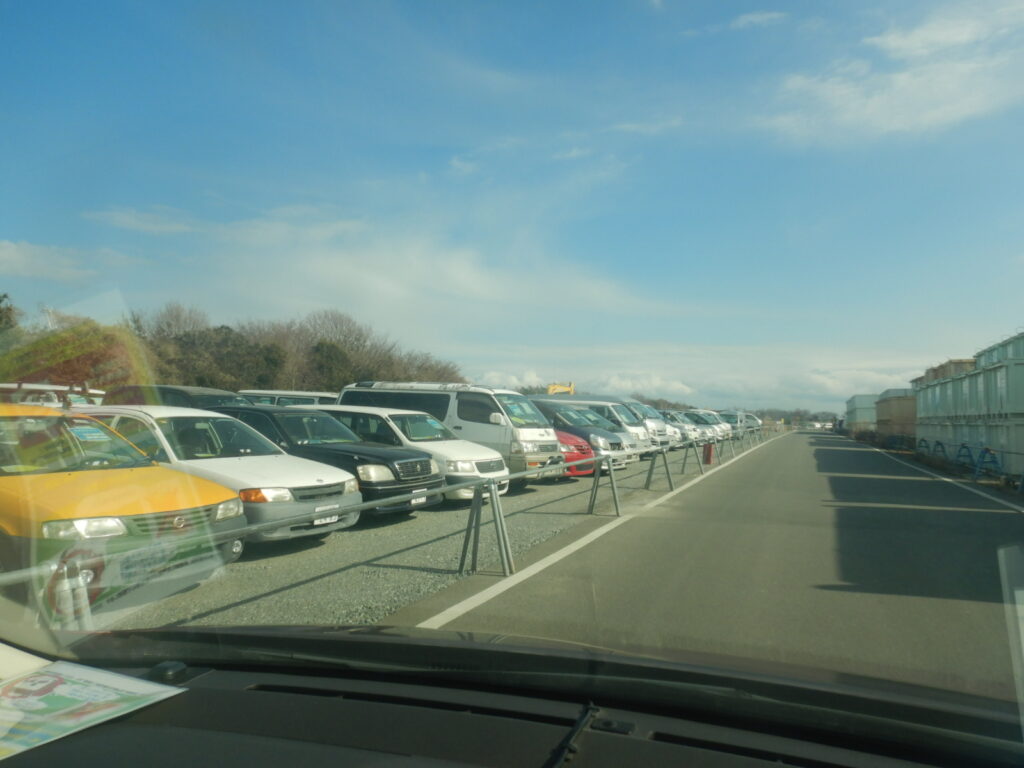
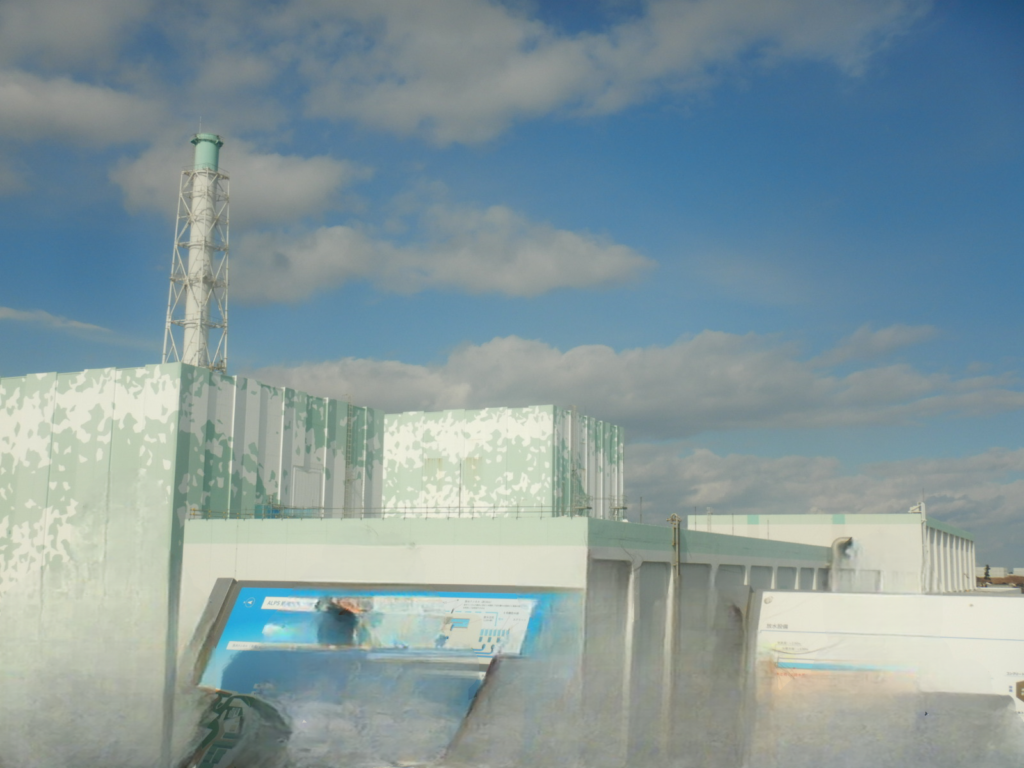
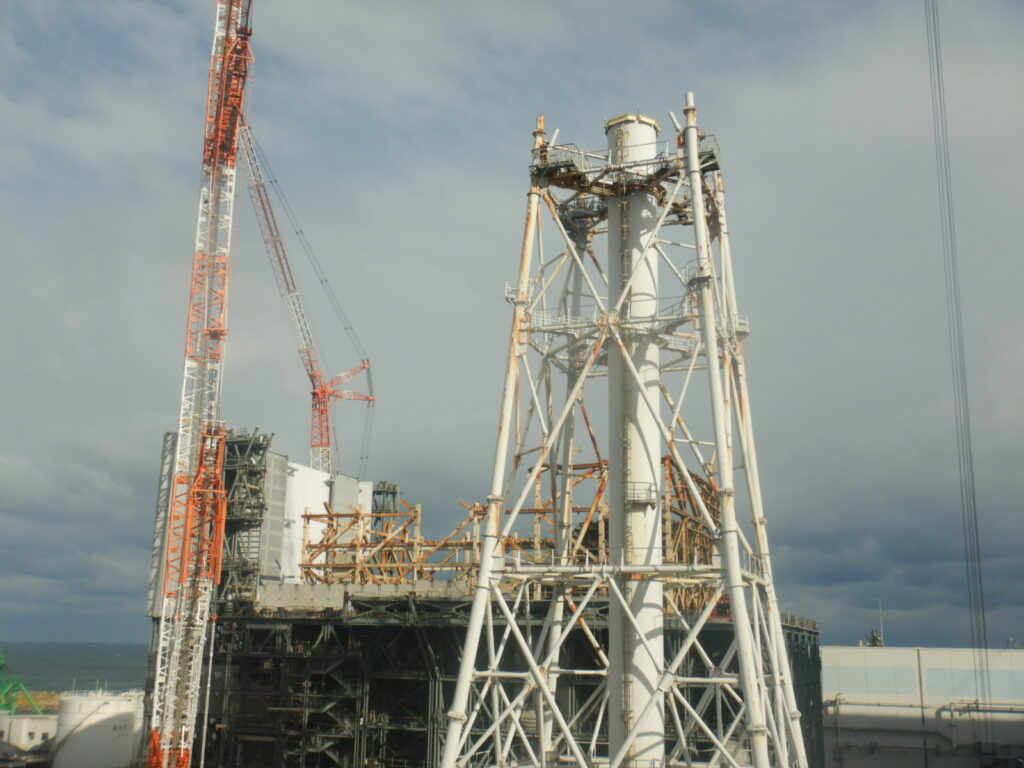
increased hydrogen gas inside, as a result, the hydrogen explosion happened next day on March 12th. Nobody knows how much contaminated debris by meltdown left inside.
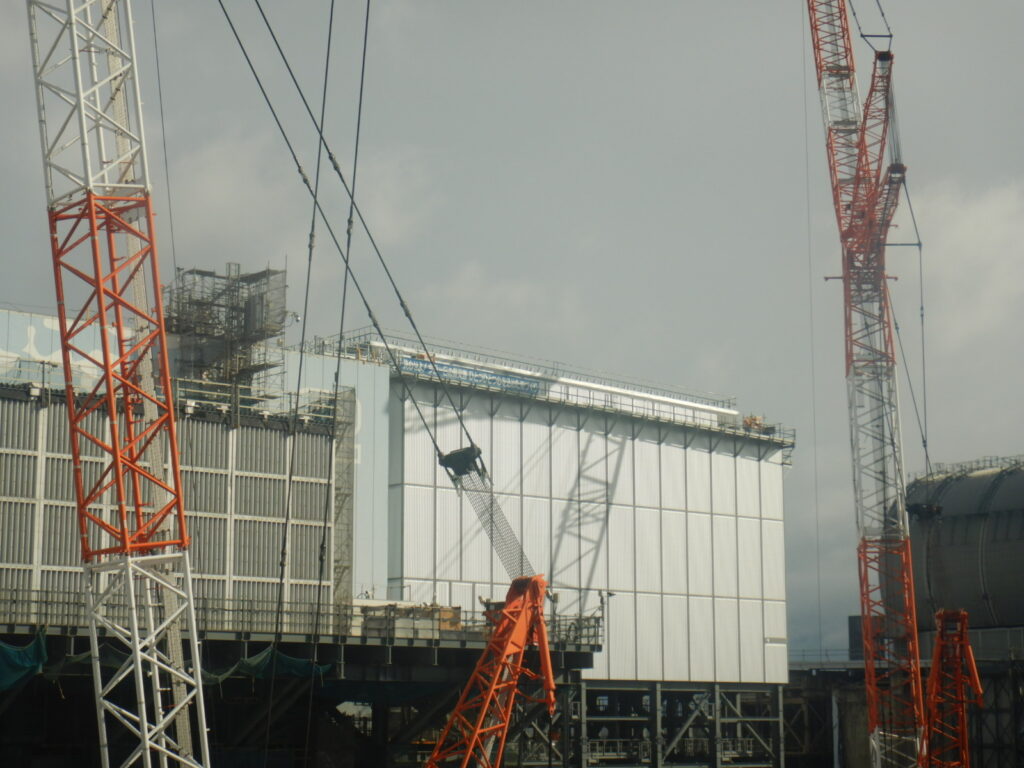
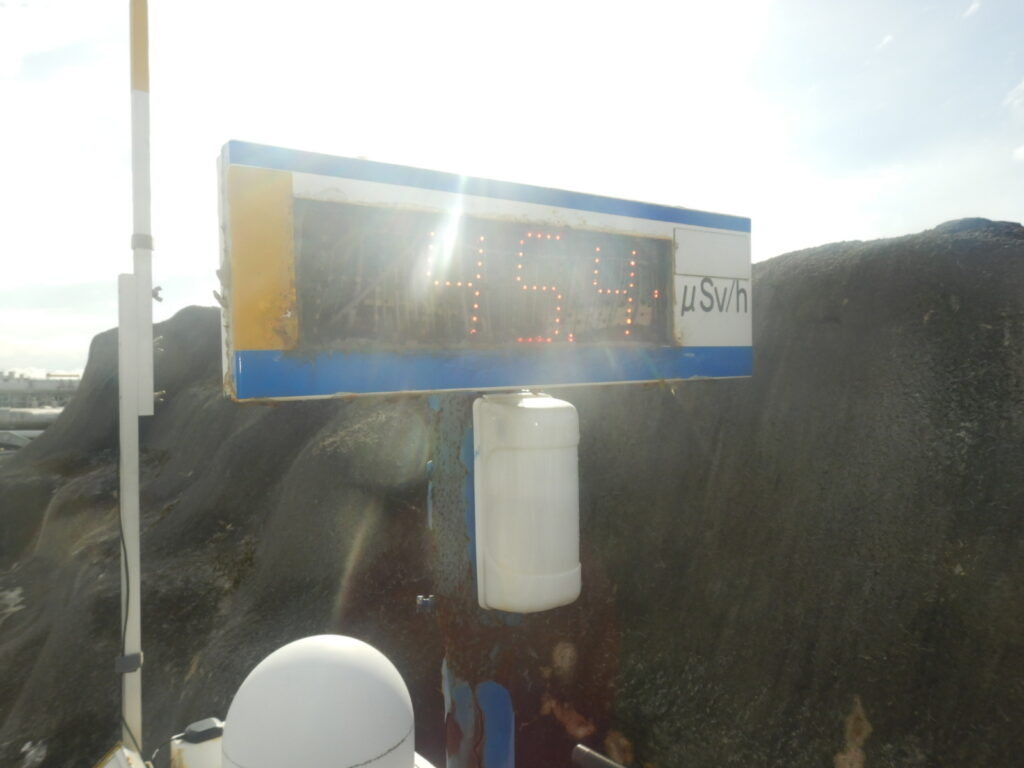
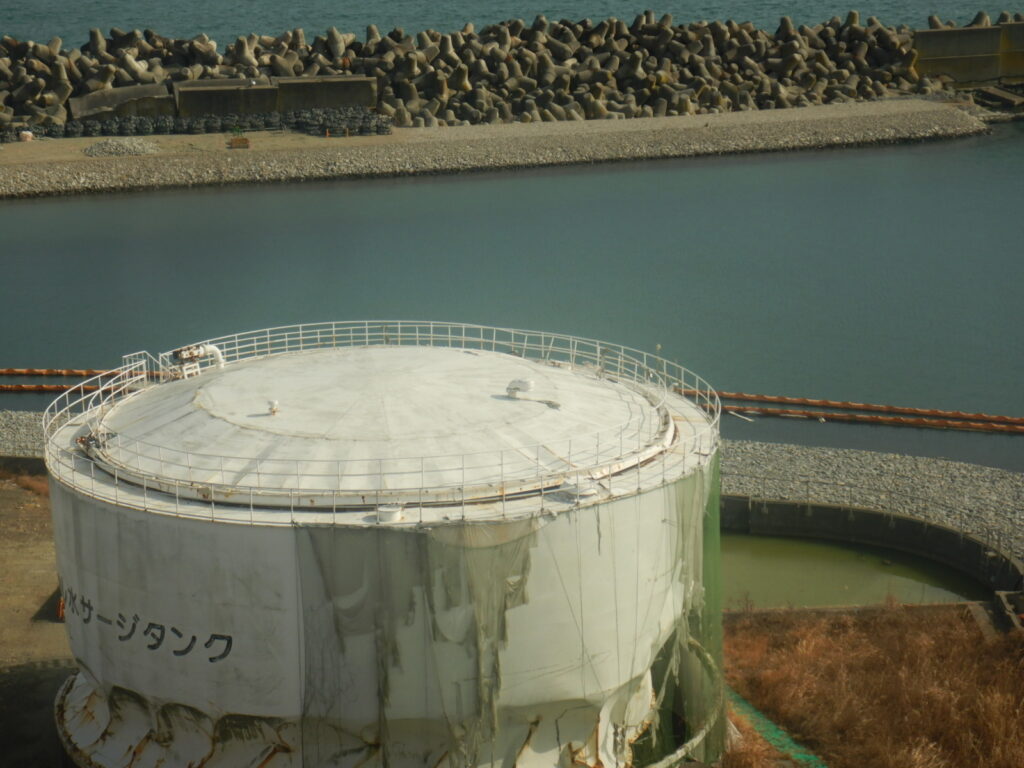
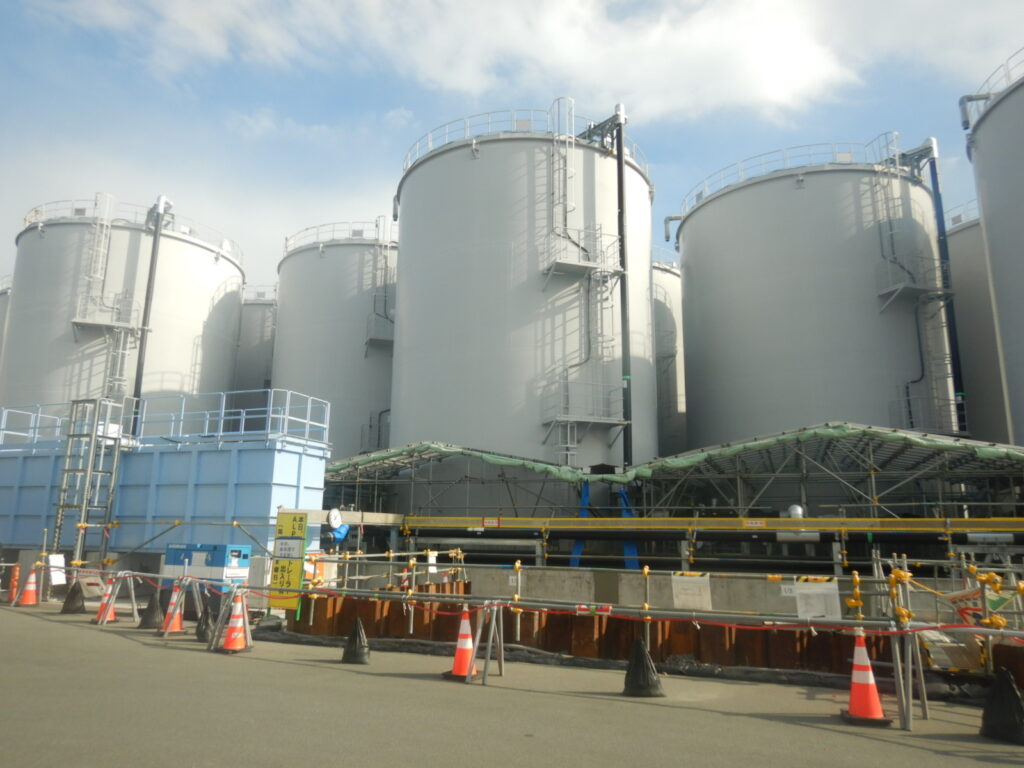
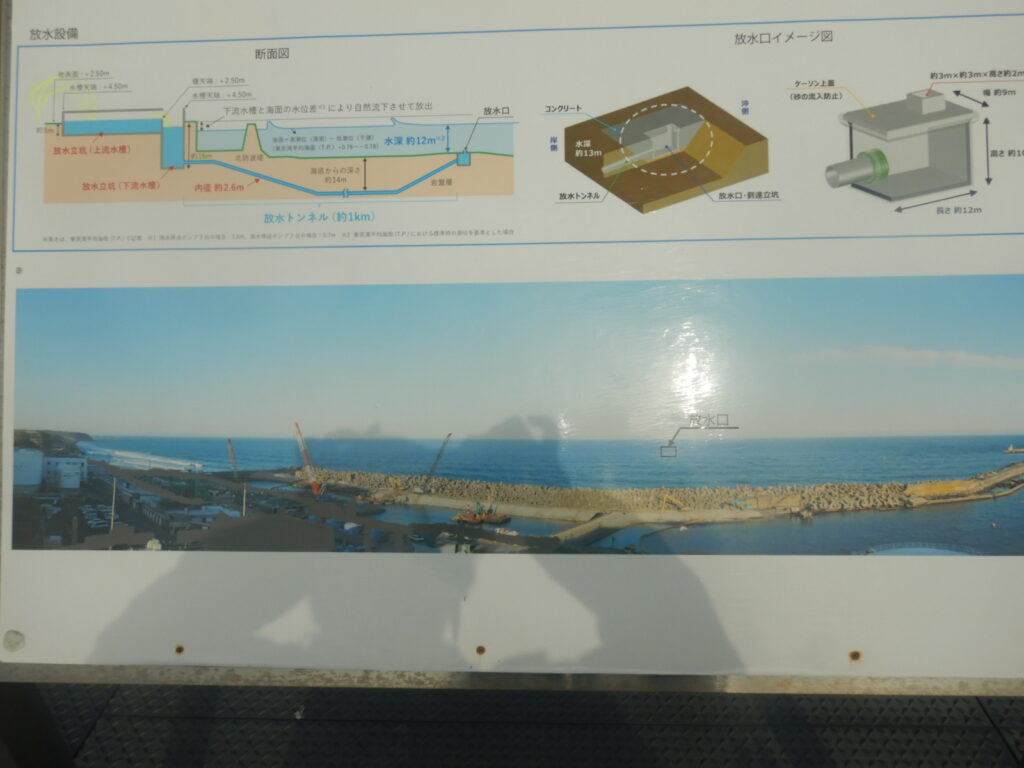
Riprun Fukushima
Riprun Fukushima is a hands-on information center where visitors can learn about the landfill disposal of waste contaminated by radioactive materials from the accident at TEPCO’s Fukushima Daiichi Nuclear Power Station. In their monitoring field, we can experience of radiation measurement. Making a reservation by telephone ( English is available ) is recommended. Free admission, open 9:00 – 17:00, closed on Mondays, year-end and New Year holidays. ( In case Monday is a holiday, open. Closed on Tuesday )
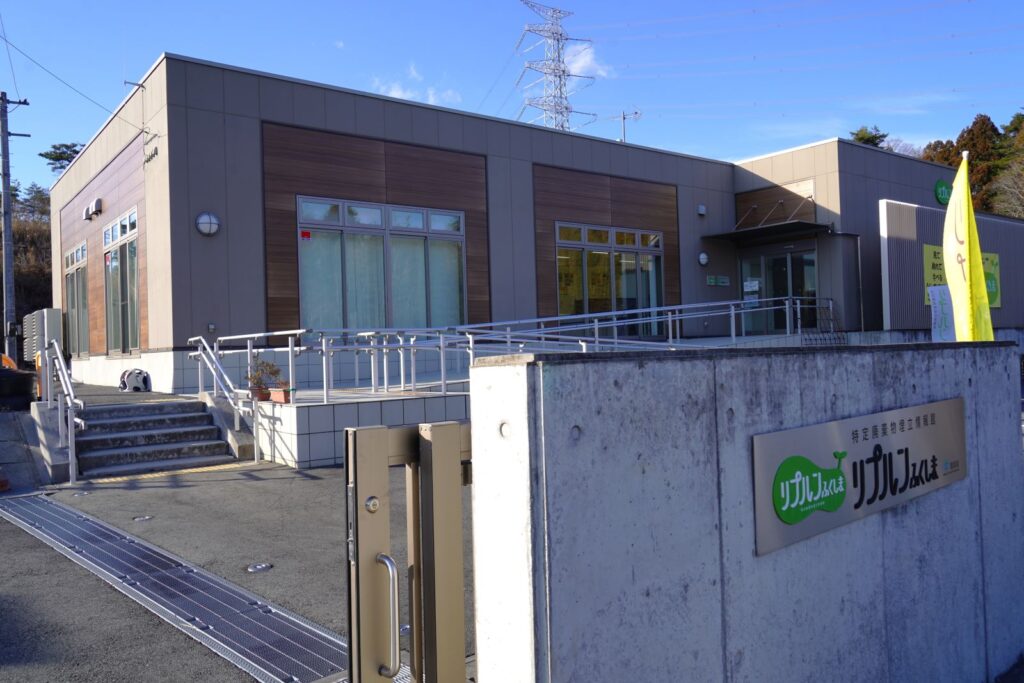
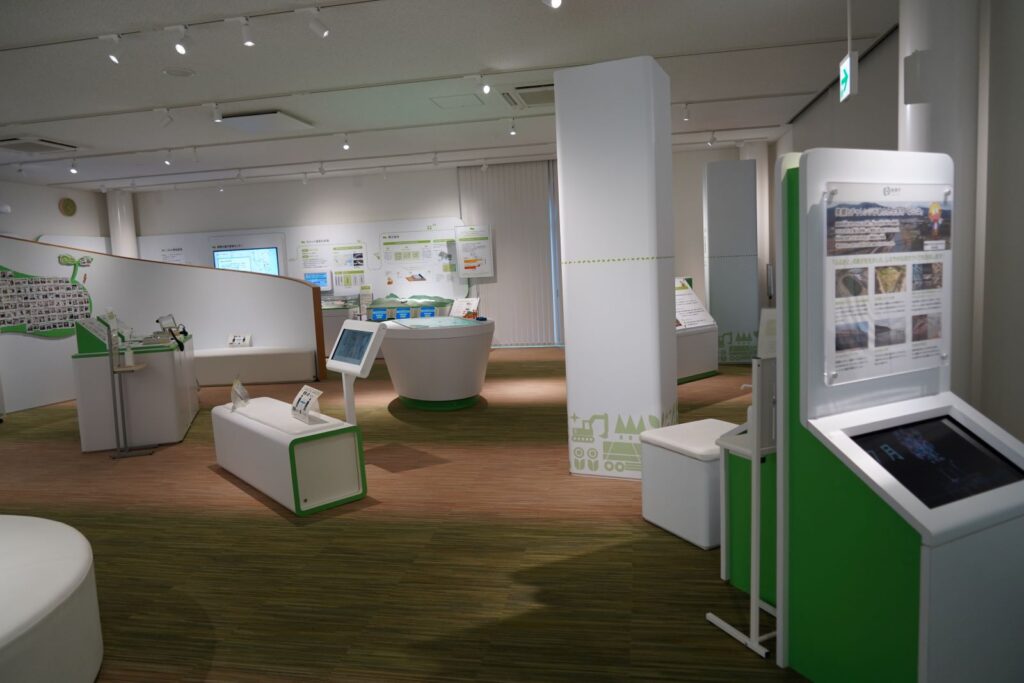
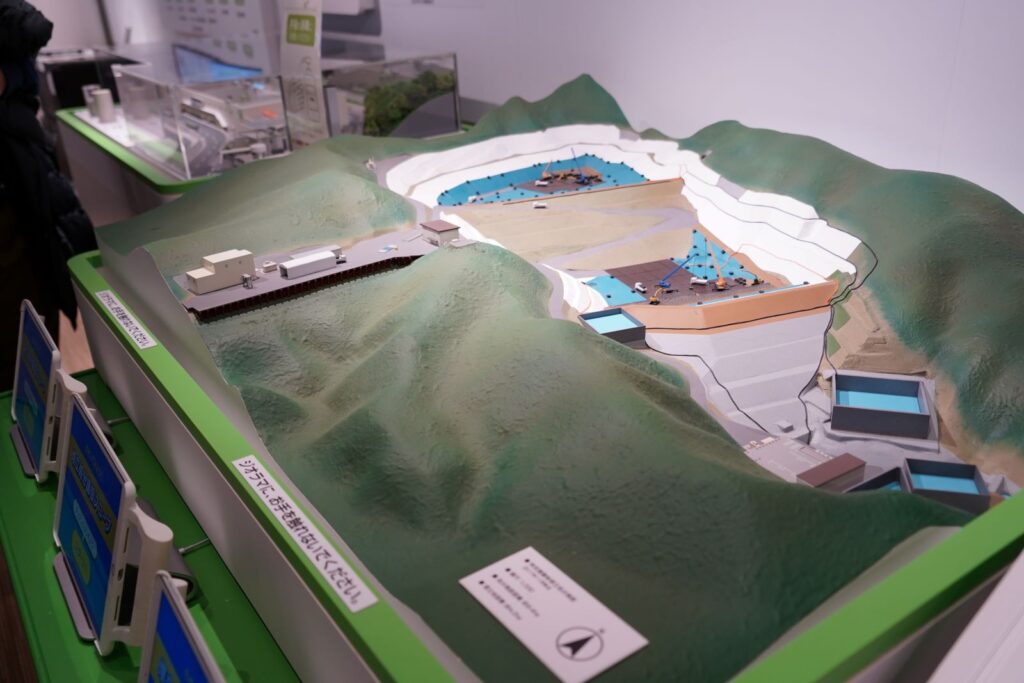
The above diorama shows the interim storage for the landfill disposal of waste contaminated
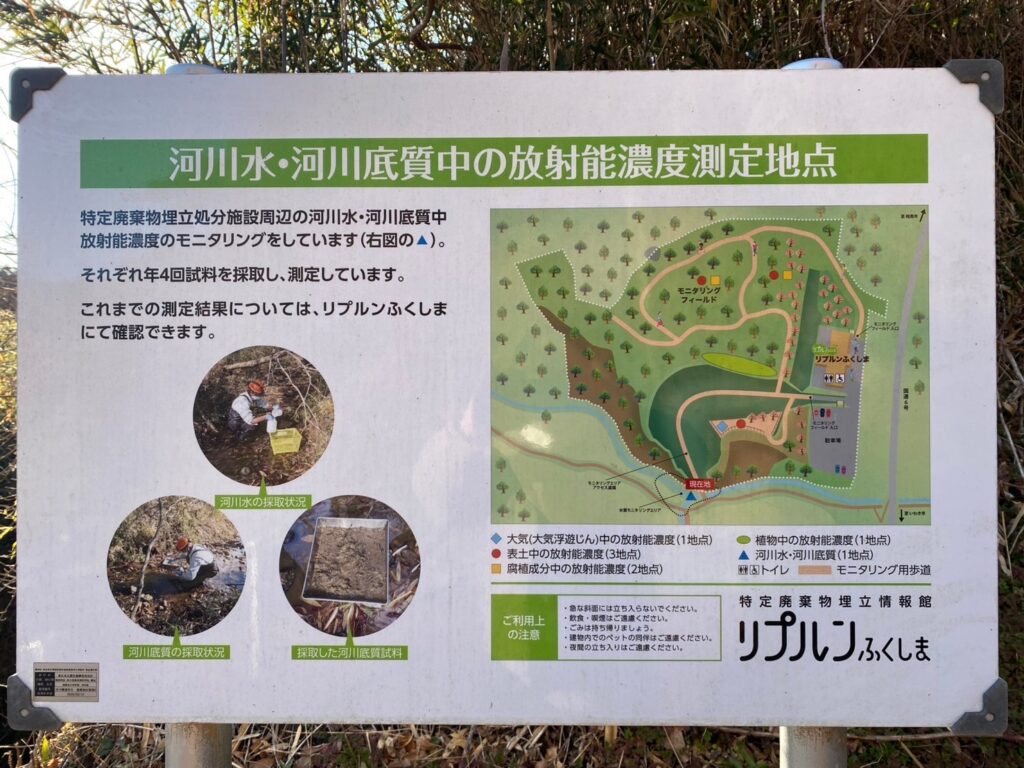

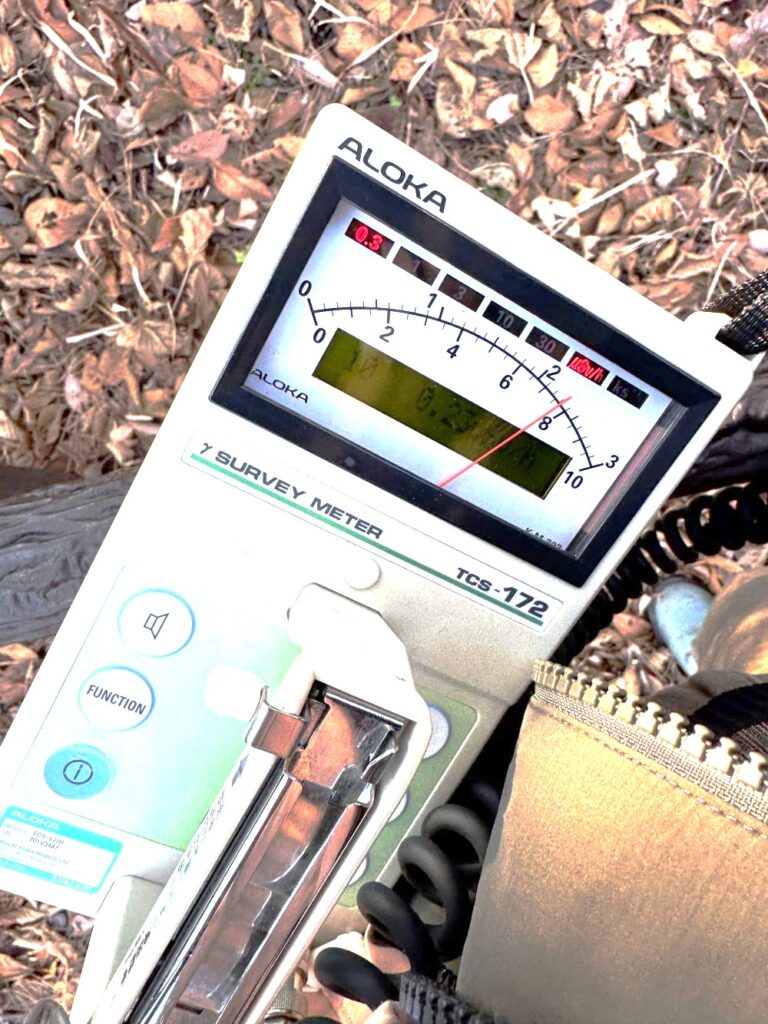
Radiation detector(left picture), the detector (right picture) shows 0.23mSv in the mixed forest in the monitoring field. ( example : 0.01mSv with a X-ray inspection, 0.1mSv for a return flight New York – Tokyo, 6760 miles )
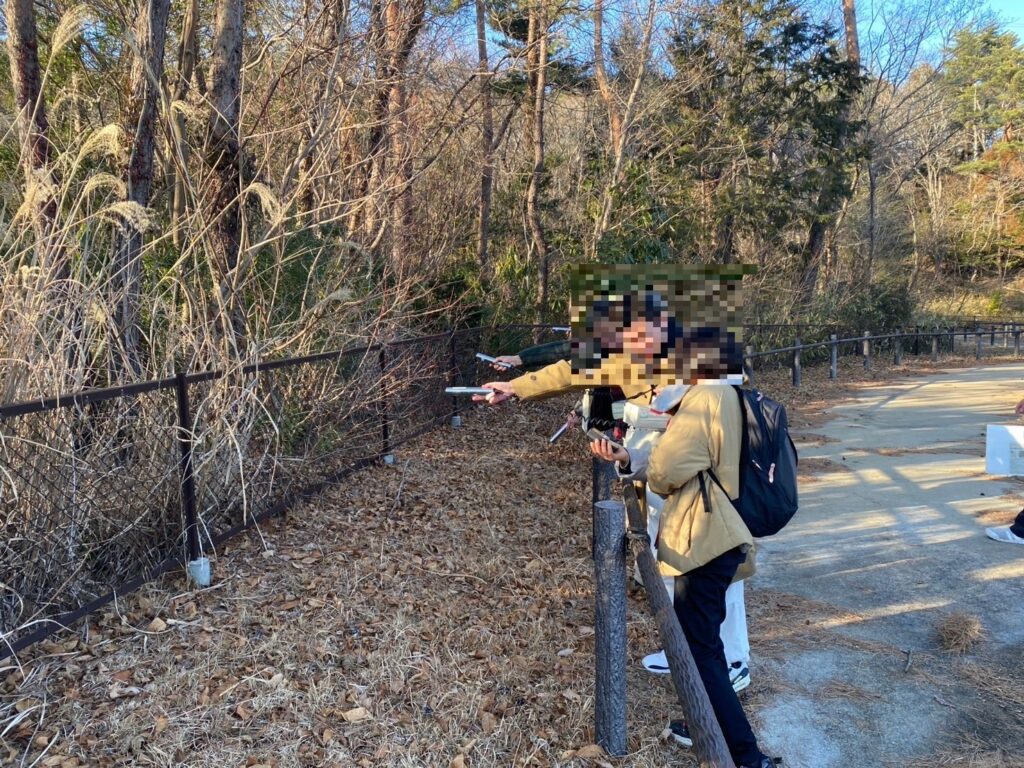
Measuring radiation in the mixed forest in the monitoring field.
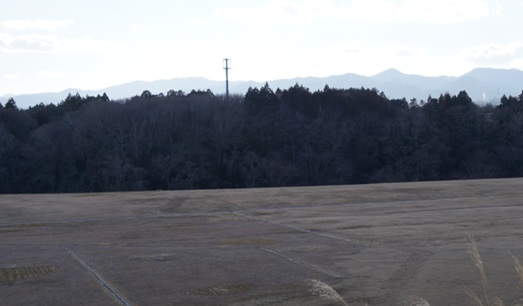
Tepco decommission archive centre
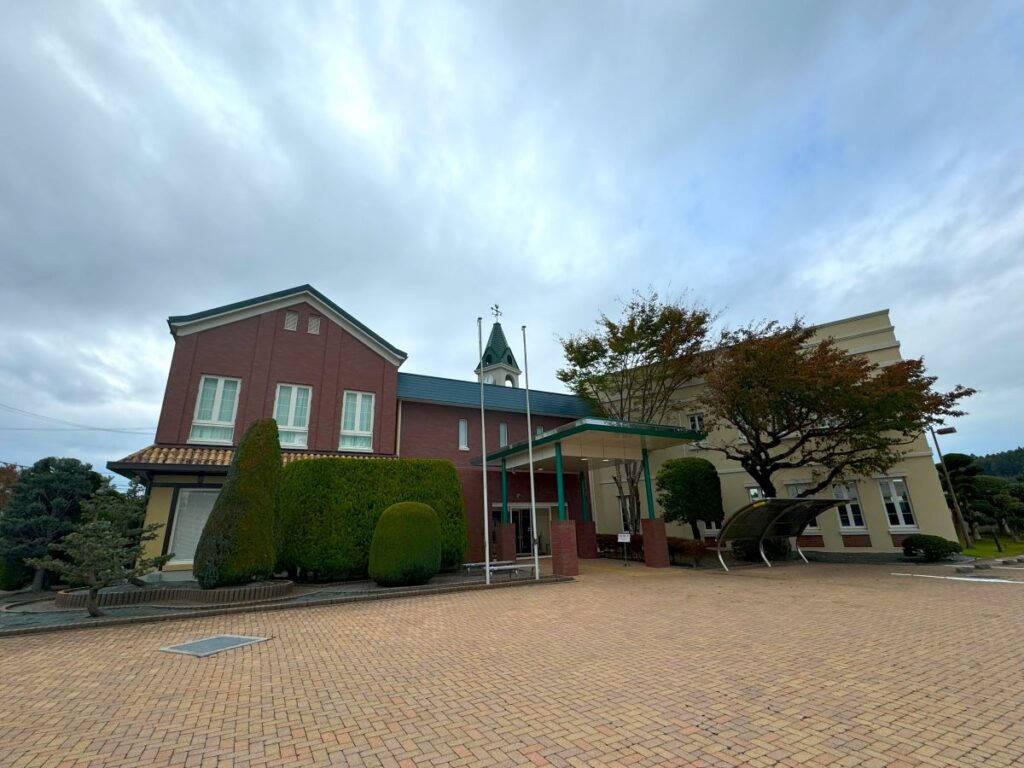
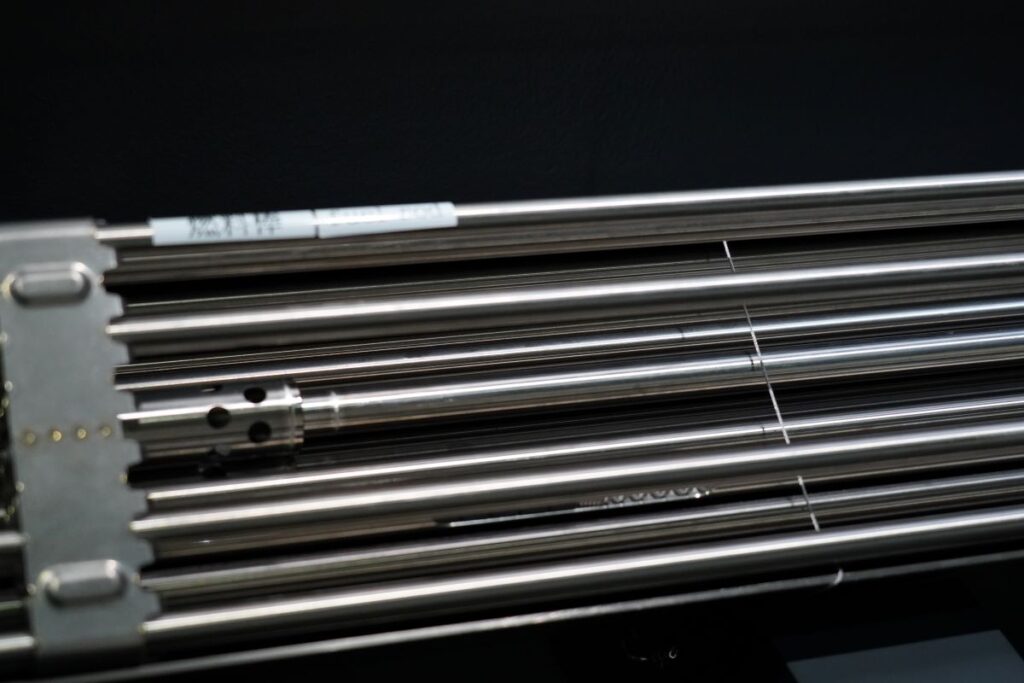
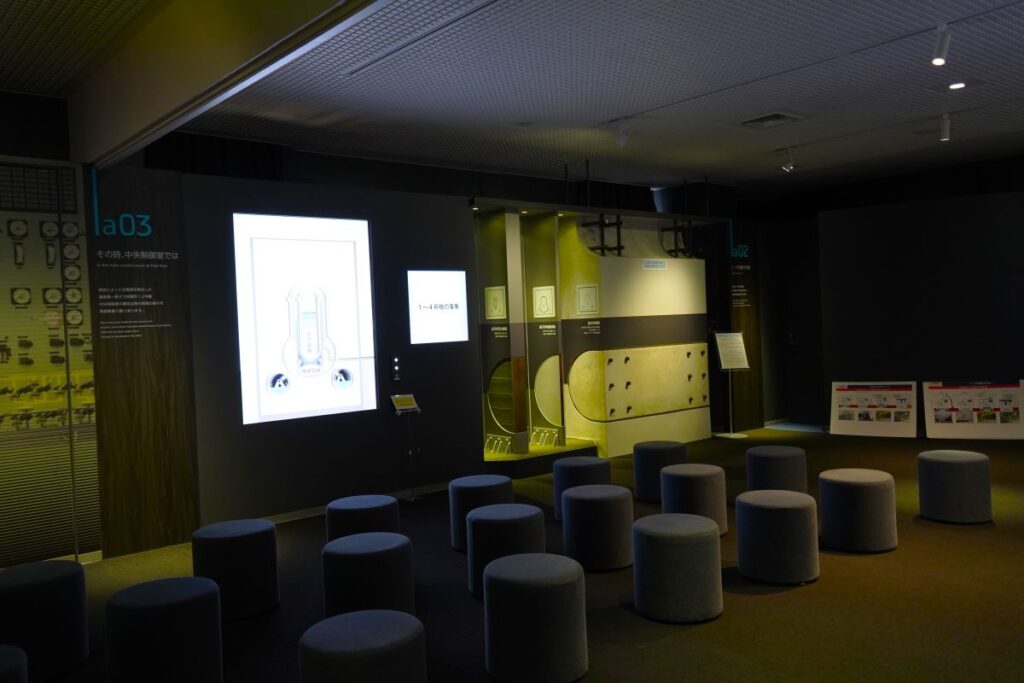
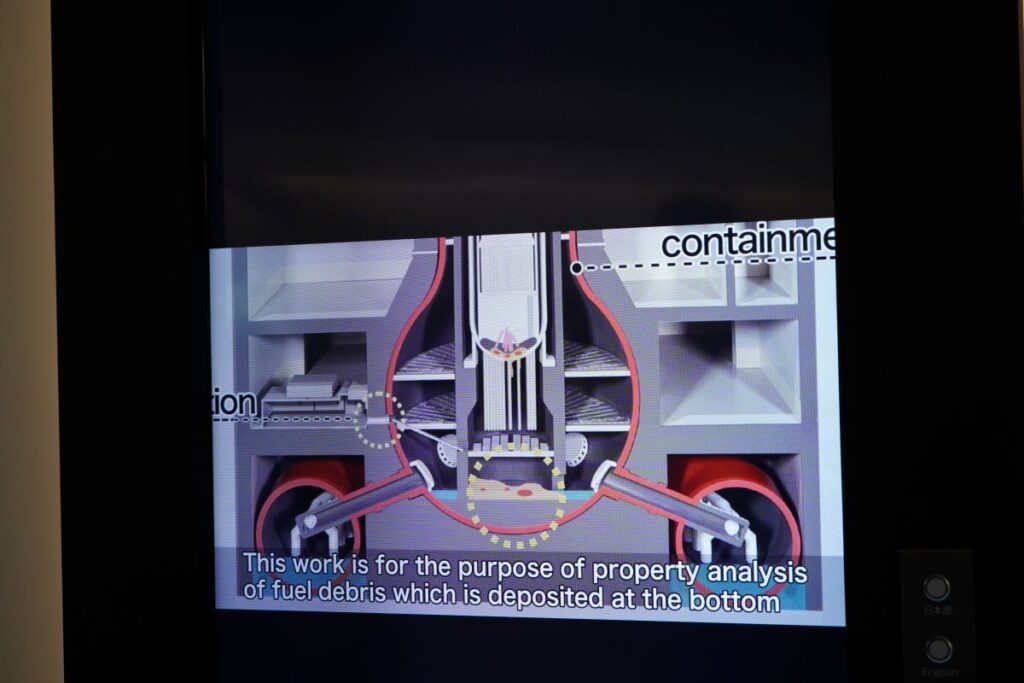
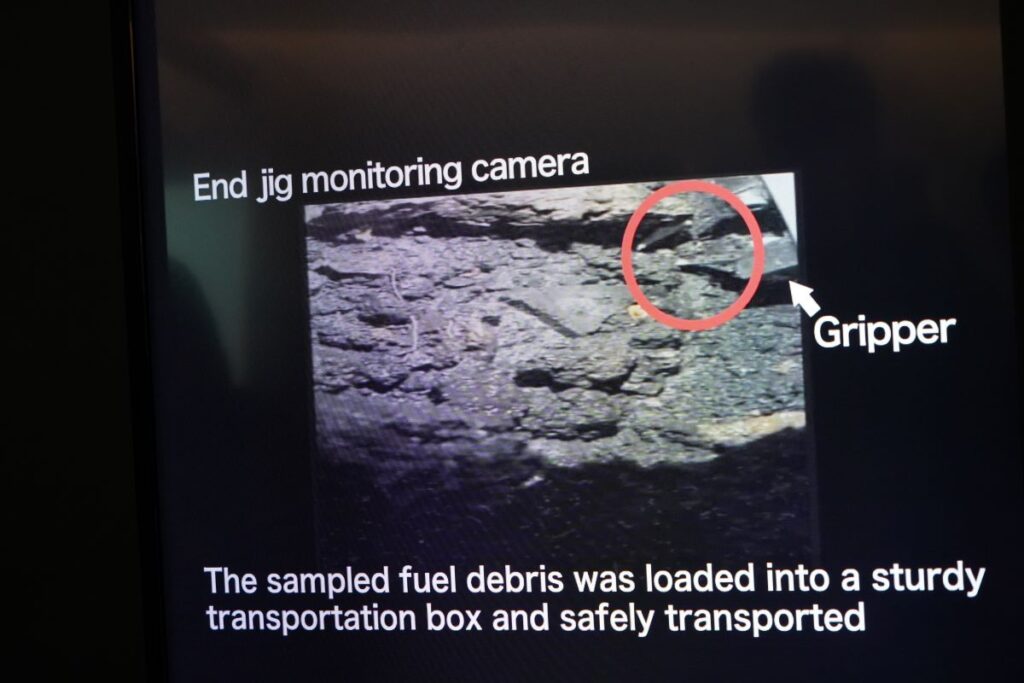
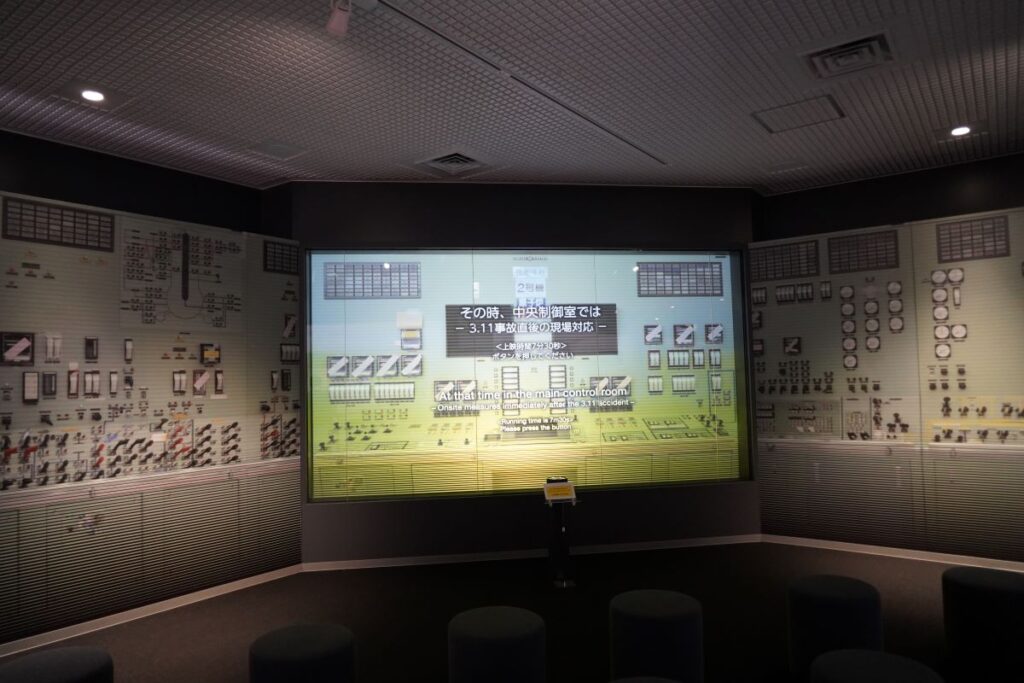
The Great East Japan Earthquake and Nuclear Disaster Memorial Museum
Fukushima prefecture opened The Great East Japan Earthquake and Nuclear Disaster Memorial Museum in Futaba town in 2020 September. Futaba town is one of places hit by the tsunami. The space around the museum is still almost empty as everything was swept away. Exhibitions show multiple disasters in Fukushima caused by the earthquake, tsunami, and TEPCO’s Fukushima Daiichi Nuclear Power Plant accident as well as the progress to reconstruction.
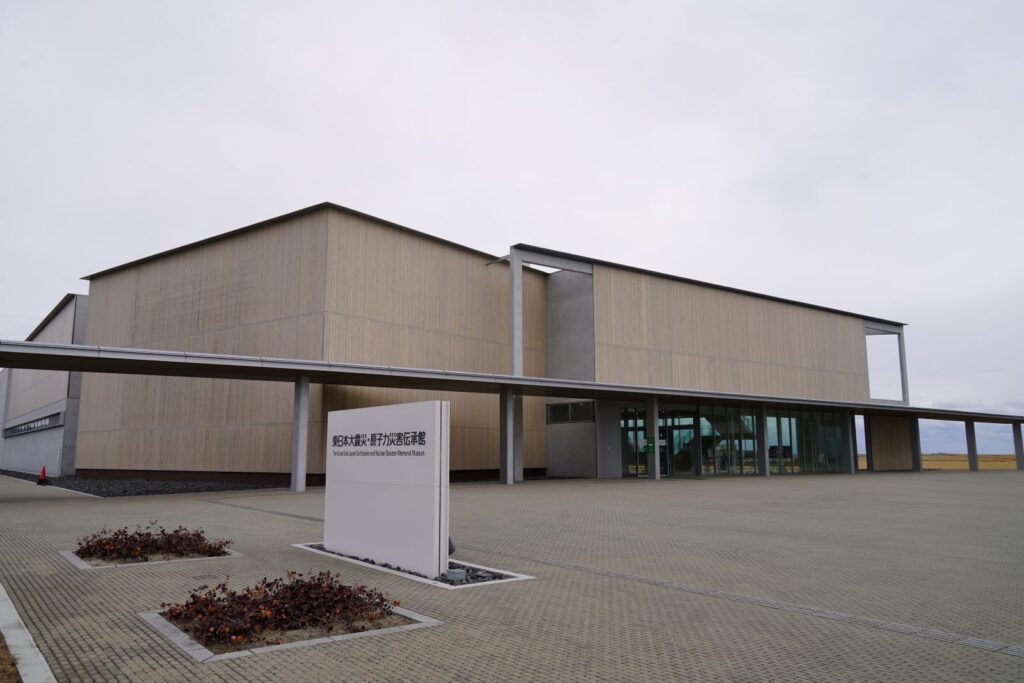
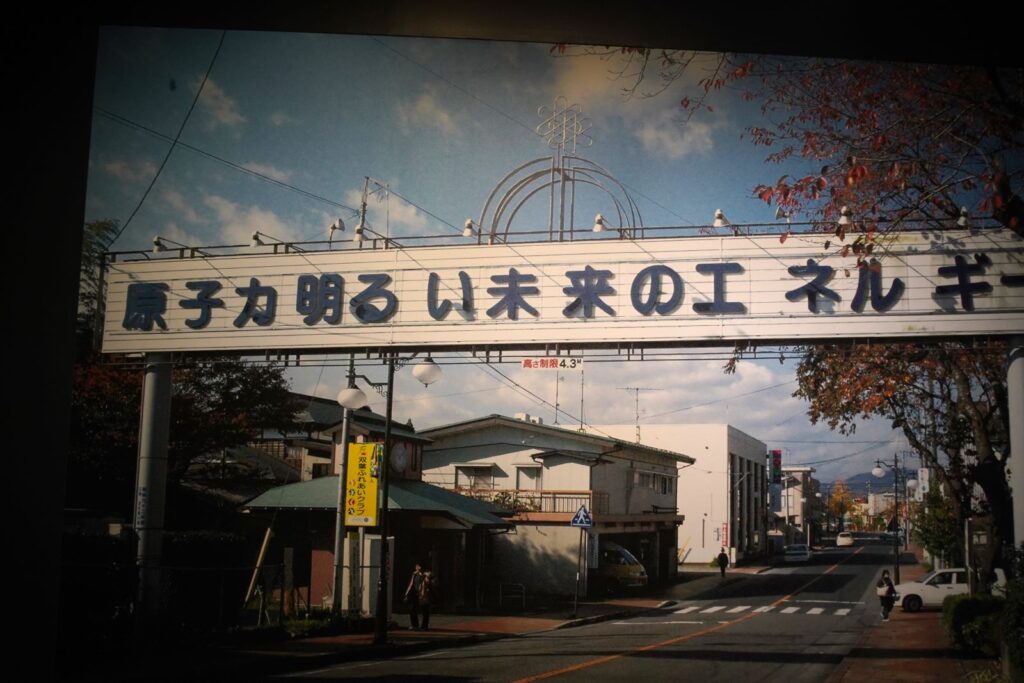
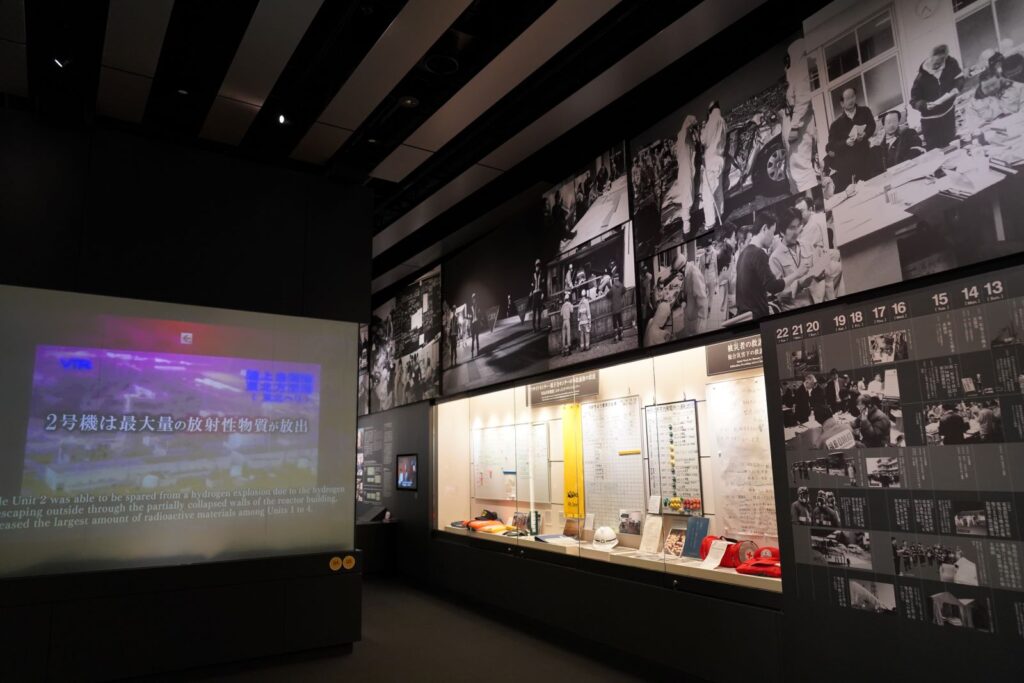
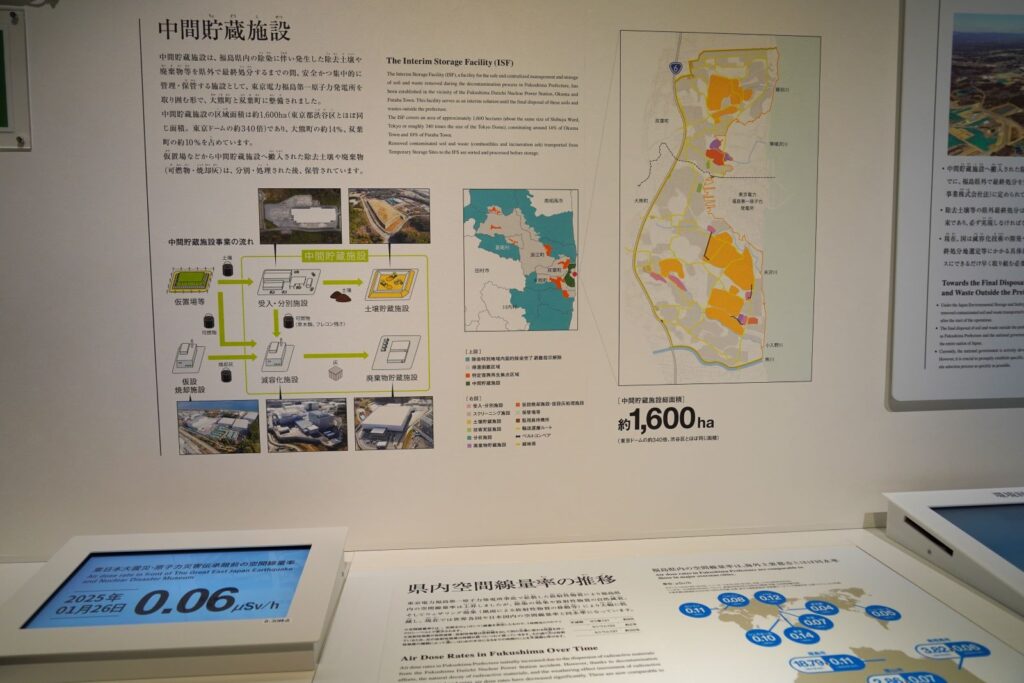
This panel describes about interim storages of the landfill disposal of waste contaminated
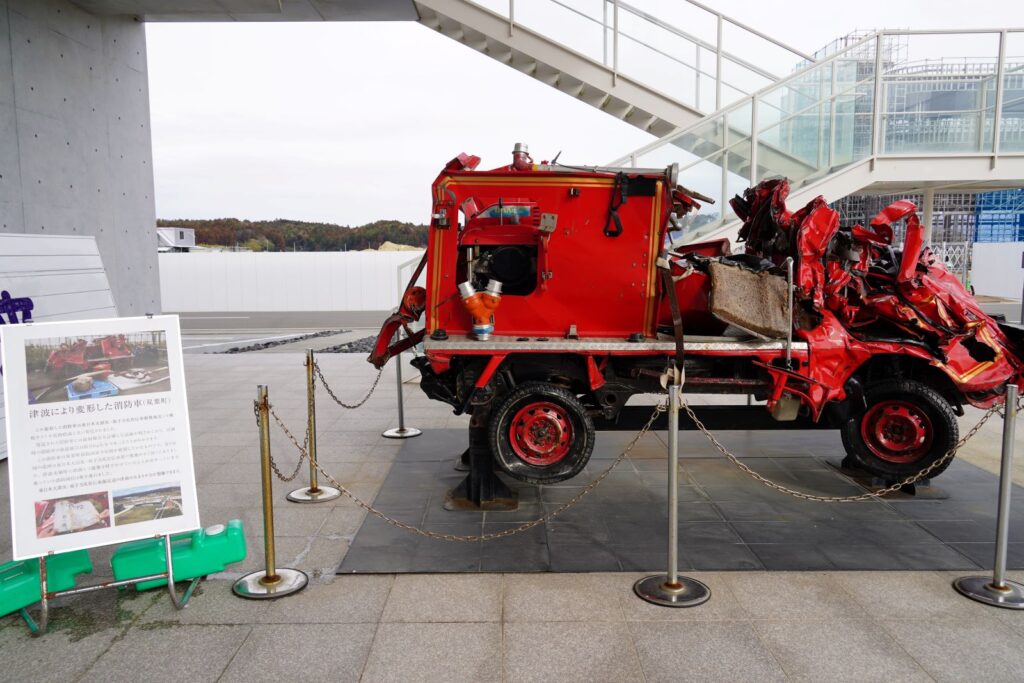
Reconstruction efforts
In Fukushima, to promote reconstruction, 15 municipalities in the area stuck have been registered as Special Zones for Industrial Reconstruction and Investment Promotion. Special tax measures are provided for business operators implementing recovery promotion projects in the zones.
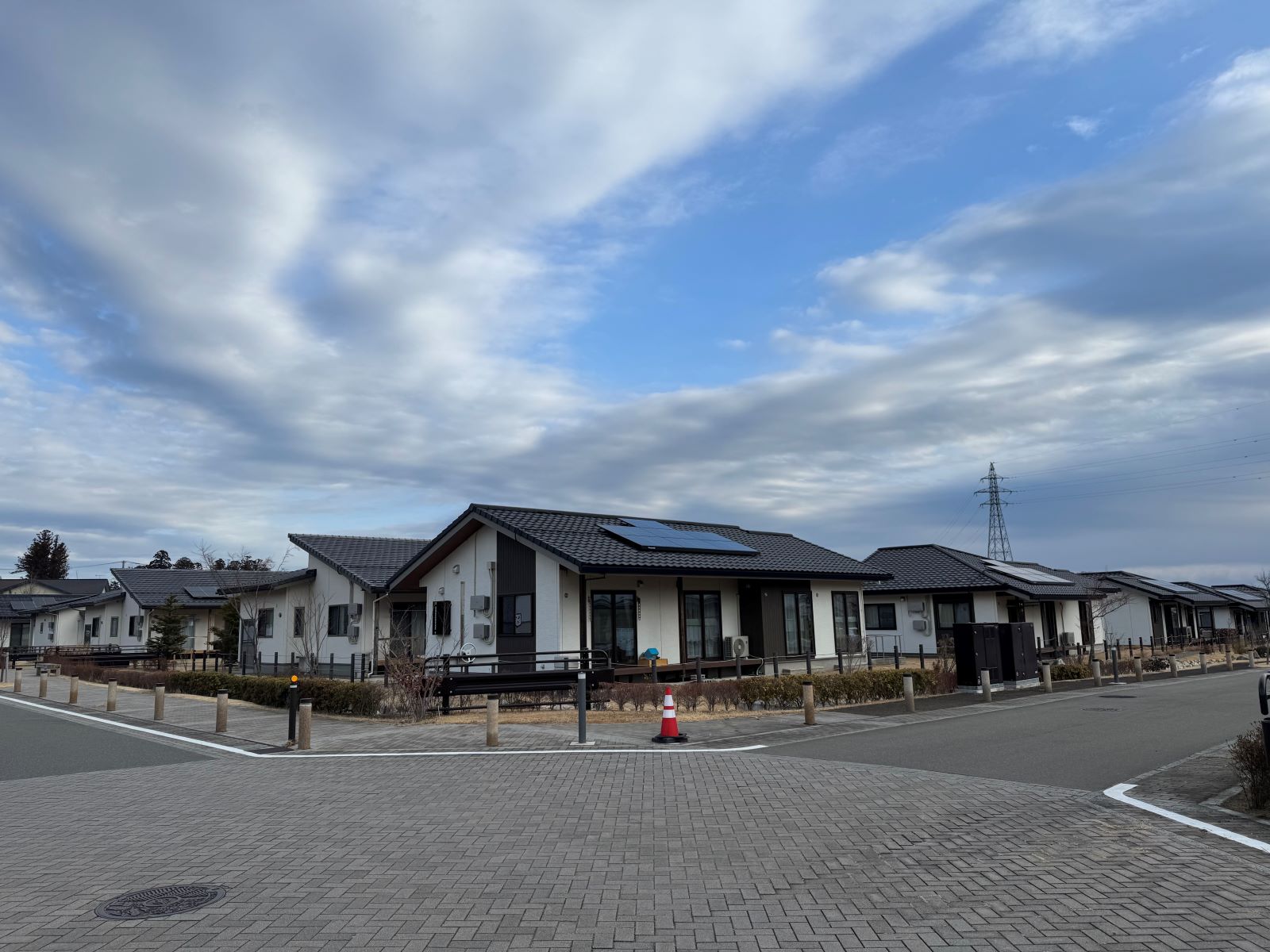
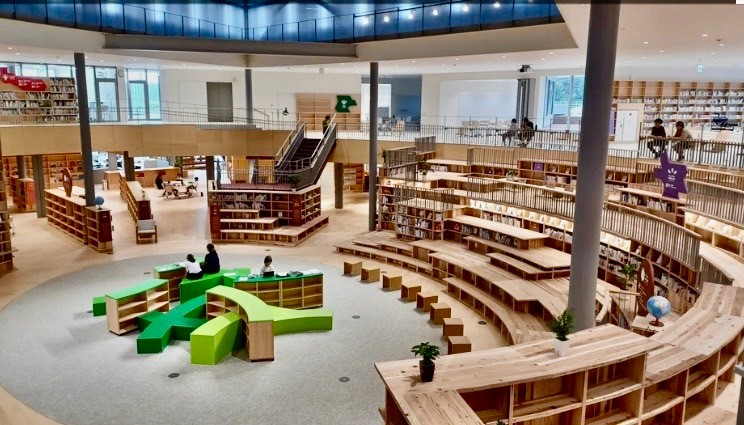
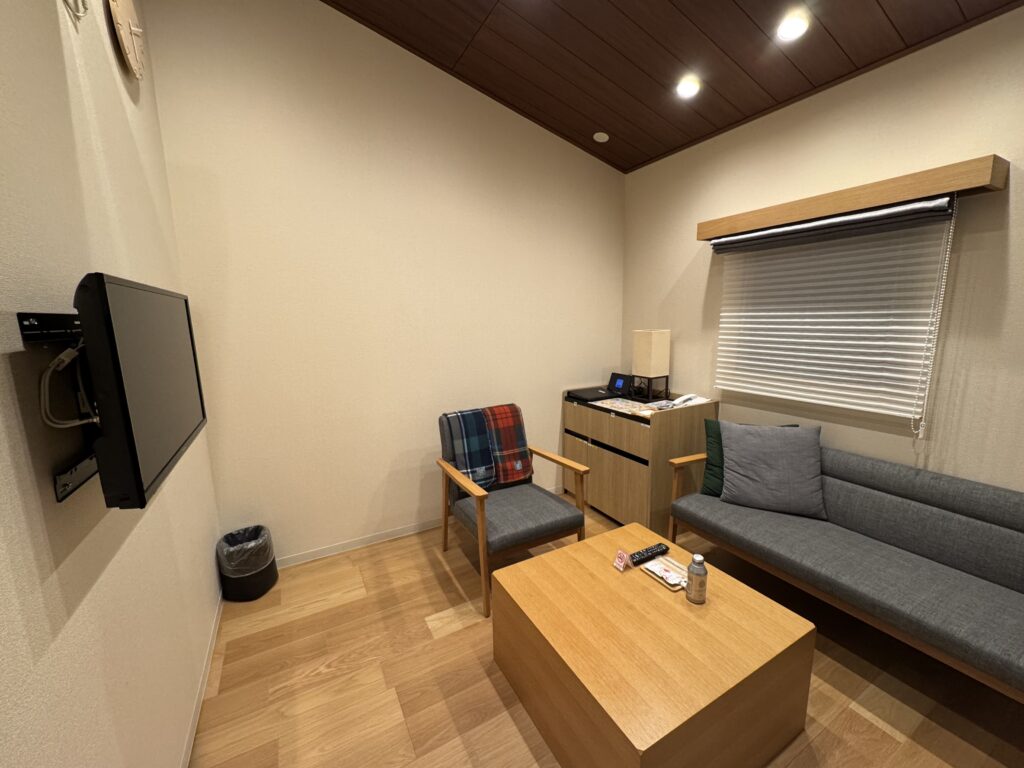
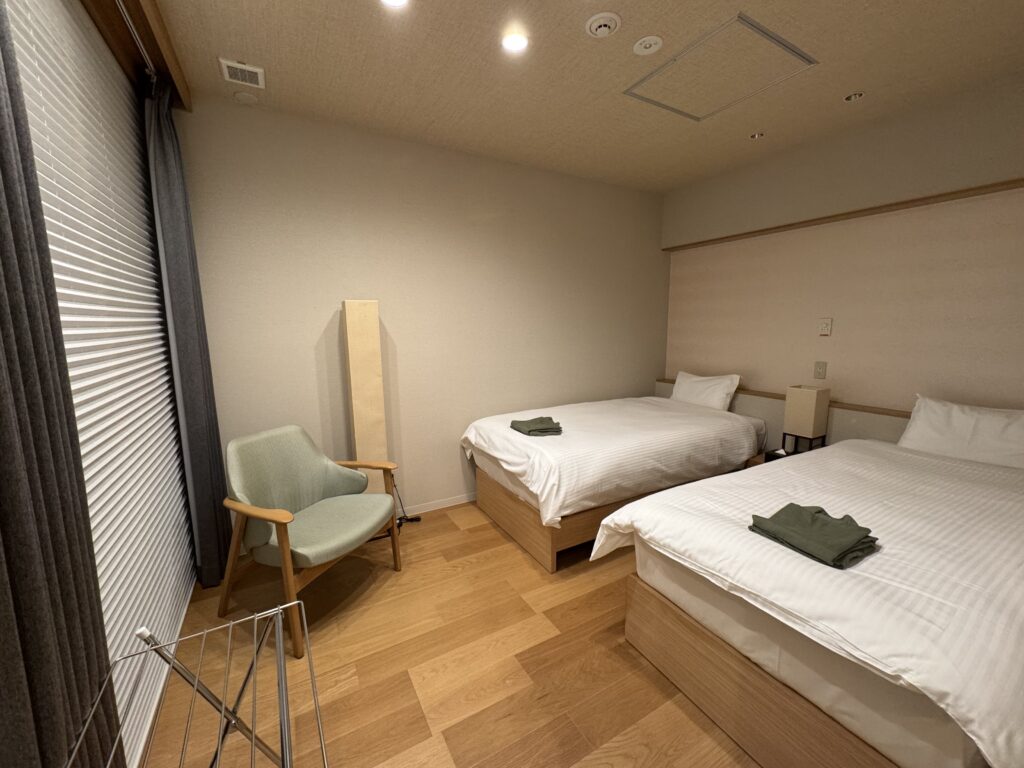
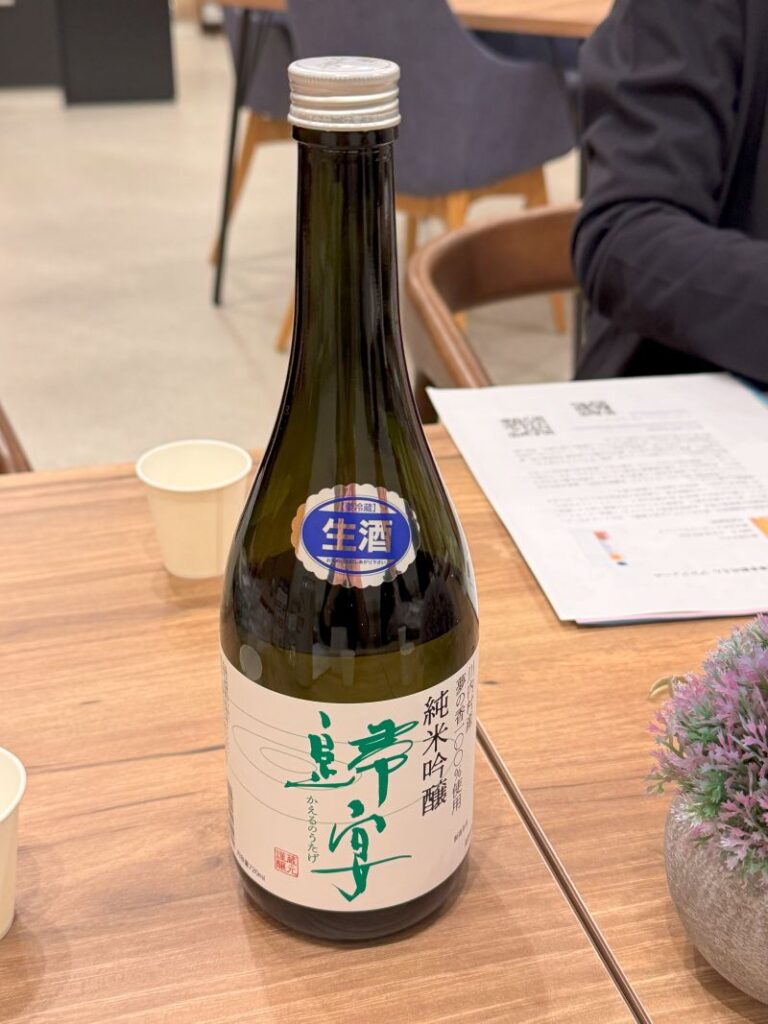
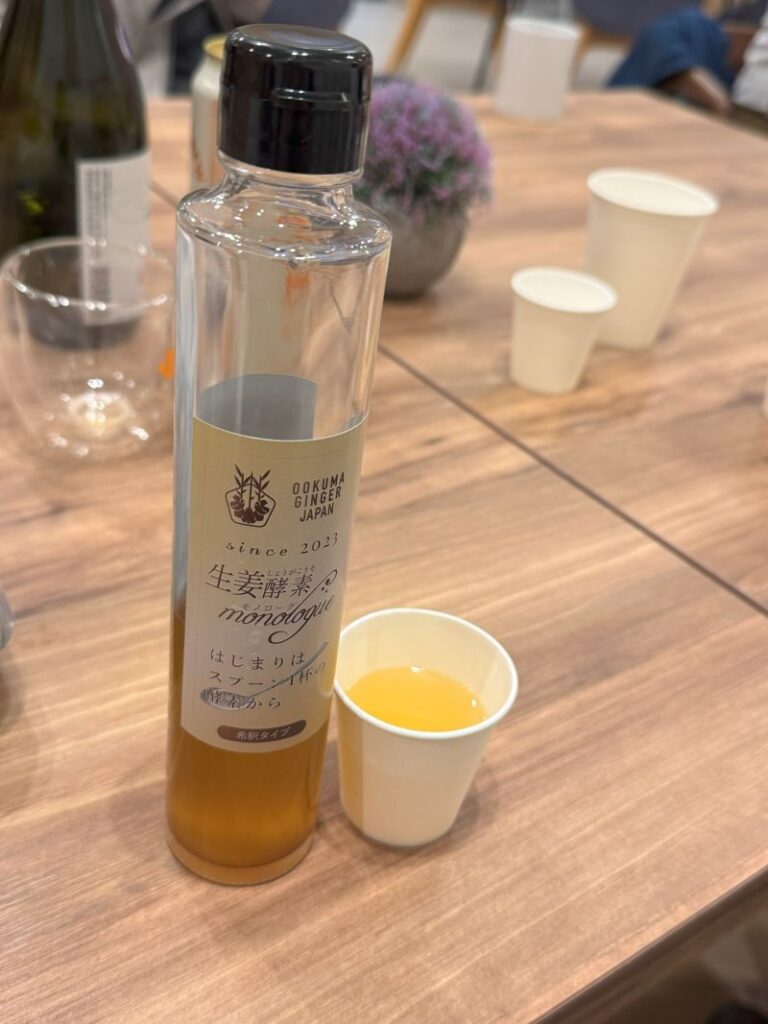
Left : a ginjo sake without adding extra alcohol and pasteurization ‘Kaeru-no-utage’ ( frog’s party ) produced by a limited liability company Kawauchi-ya in Kawauchi village next to Tomioka town. It is made from a sake rice variety ‘Yume-no-kaori’ which had been newly developed in Fukushima.
Right : ginger enzyme syrup produced by TASHIRO FARM in Okuma town and it is made from their ginger ‘Okuma ginger’ without adding any sugar content in Okuma-town.
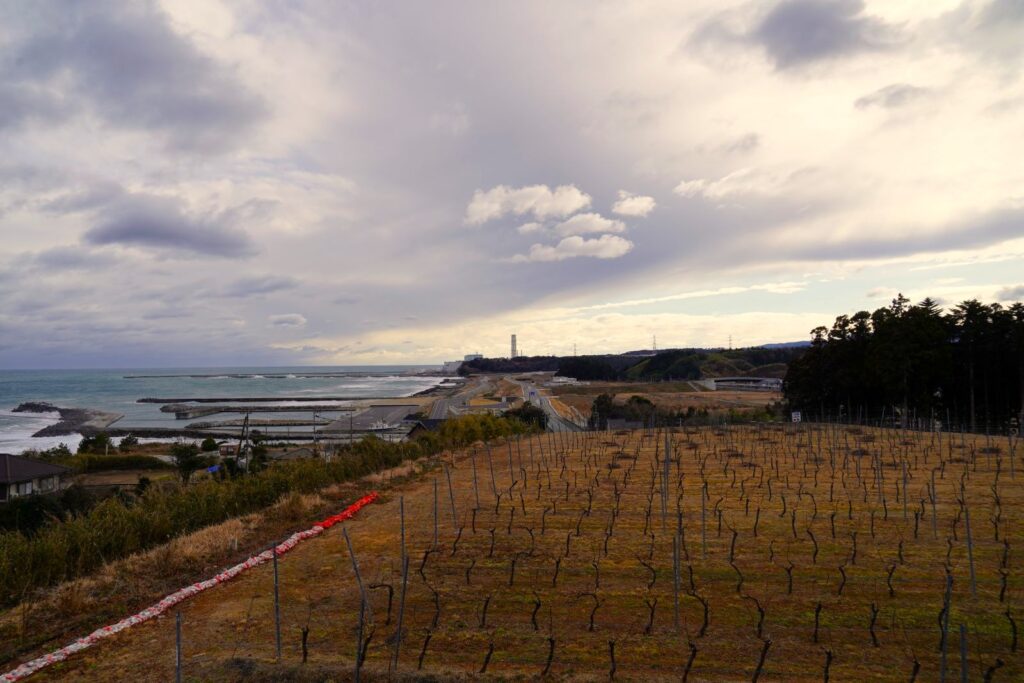
In Kawauchi village, there is Mt.Hirabu mountain (845m) and Hirabu bog where Forest green tree frogs are living. That is a hint of the name of the sake ‘Kaeru no Utage’ ( Frog’s party ). The bog is on the top of Mt.Hirabu. The frogs can be found between June and mid-July. Starry sky is beautiful for fine days. Hot spring ‘Kawauchi-no-yu,’ a hotel ‘Business Hotel Kawauchi’, a camping site and cottages are open. https://a-kawauchi.com/#news.
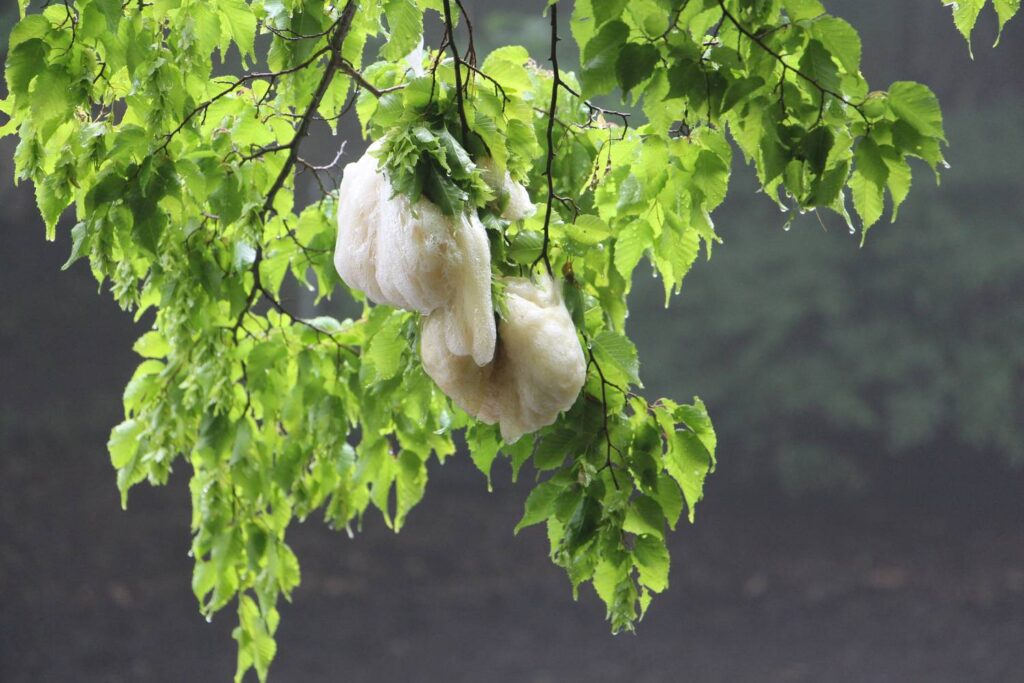
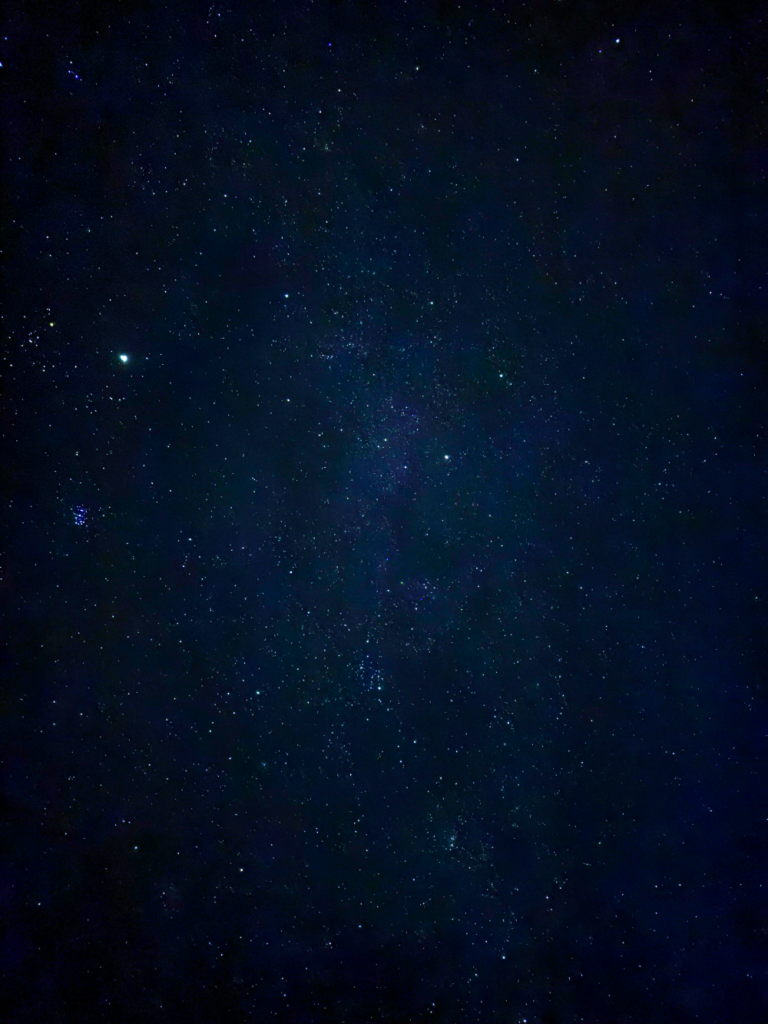
Fukushima Densho Study Tour
‘Fukushima Densho Study Tour‘ ( Fukushima hand down study tour) takes place once every month for 2 nights 3 days, 26,000 yen per person ( charges at Hot Okuma hotel, simple breakfast and dinner are included ). 10 people are capacity per tour. Yealy schedule should be up in January. Sign-up of the tour needs to be done on their home page. Currently Japanese language only but if a Japanese speaker is in your group and you can understand English, the organizers would help with you joining the tour. The organizers will pick you up at JR Fukushima station where takes 1.5 hour from JR Tokyo station by Tohoku Shinkansen ‘Yamabiko’.

